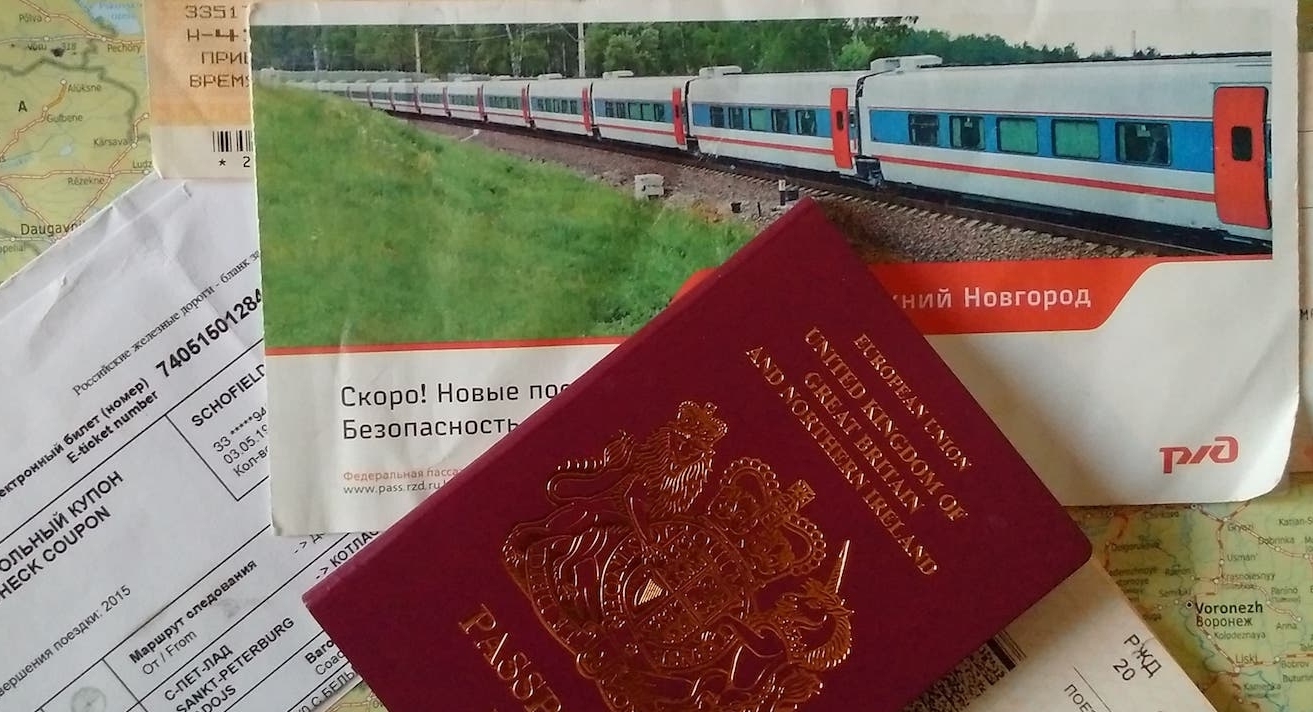
Before I get started on Russian trains, I would like you to close your eyes and imagine this:
You have been on a train for ten hours and still have twelve hours to go. You’ve never been on a train for this long.
Your coach is swaying and clanking through forests teeming with nameless streams under the expansive Russian sky. Just now you passed through a city with golden domes glittering in the sun.
Time is somewhere else. You are beyond the realm of time.
You are drinking your thirteenth glass of tea and discussing fate and eternity with strangers – even though you can’t speak Russian.
The Russian Train Journey – a Genuine Russian Experience
A train journey is a must-do in Russia, like going on a gondola in Venice – except that for the price of a half hour on a Venetian gondola, you get seven time-zones of Russian train travel.
The train is the cheapest, safest and most comfortable way to travel through Russia. When you’ve finished reading this guide, you will know all you need to know to make the most of your Russian train journey.
Contents
- What you need to know before taking a train in Russia
- How to Buy Russian Railway Tickets
- 3 Classes on Russian Trains – what is the difference?
- What I wish I had known before taking the Trans Siberian train
- Russian International Train Services
- The Unwritten Rules of Russian Train Travel Etiquette
- And Now for some Written Rules of Russian Train Travel
- Fun Things To Do on Russian Trains
- Read this before going to Kaliningrad by train
What you need to know before taking a train in Russia
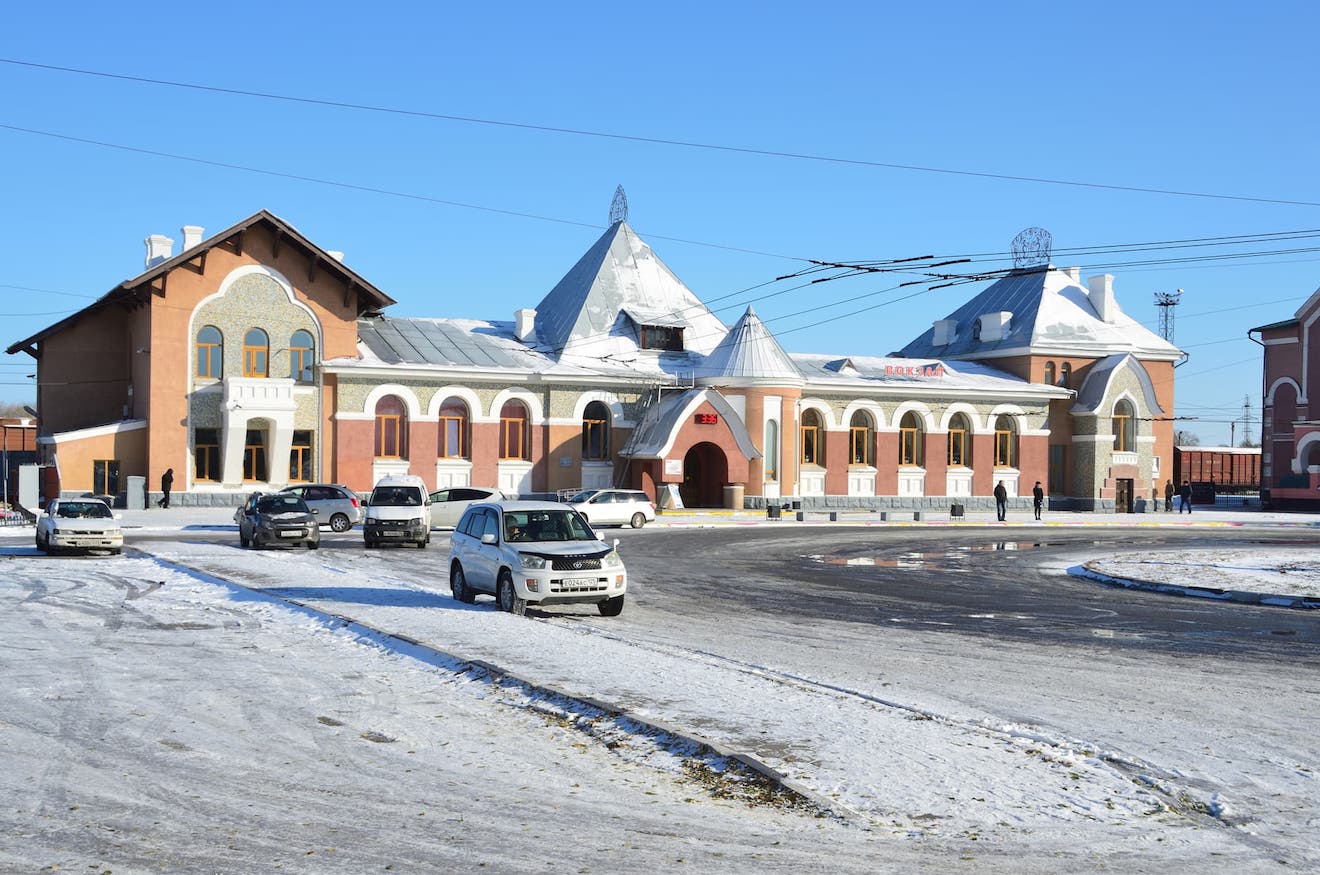
Russian Railways is like a state within a state, run with the precision of an atomic clock. Until recently it had its own time-zone: the entire Russian Railways was run on Moscow time!
So if you took a train from Blagoveshchensk, you had to be at the station six hours earlier than the time stated on your ticket, as Blagoveshchensk is six hours ahead of Moscow.
Imagine pushing open the door to Blagoveshchensk station, putting one foot across the threshold and gaping at the unreality of time itself.
Since the 1st of August, 2018, all departure times on tickets and clocks at stations are in local time across the Russian Railways network.
The 12 words every Russian train novice should know

A smattering of Russian will do two things for you. First, it will make your life much easier. Second, it will make Russians love you for your effort. Here are the staple words of Russian train travel:
- Вокзал – Vokzal (vagZAL) – Station
- Касса – Kassa (KASSa) – Ticket Office
- Поезд – Poyezd (PAW-yezd) – Train
- Вагон – Vagon (vaGON) – Coach
- Проводник/Проводница – Provodnik/Provodnitsa (pravadNEEK/pravadNEETsa) – guard/attendant (male/female)
- Билет – Bilet (bilYET) – ticket
- Туалет – Tualet (tuaLYET) – toilet
- Пожалуйста – Pozhalujsta (paZHALsta) – Please
- Спасибо – Spasibo (spaSEEba) – Thank you
- Да – Da (DAH) – Yes
- Нет – Nyet (nYET) – No
And the most important word of all:
- Чай – Chai – Tea
The easiest way to get your smattering of Russian
Read A Clockwork Orange by Anthony Burgess
I mean it. If you read this book you will effortlessly learn enough Russian words to make droogs (friends) you’ll cherish for the rest of your jeezny (life).
How to Buy Russian Railway Tickets
First of all:
- Russian Railways sell tickets up to 90 days in advance. No earlier. Tickets for some trains open only 60 days before departure and some only 45 days. Avoid any agencies who claim to have access earlier. They don’t.
- You need your passport to buy tickets for all Russian main-line trains. Only local services are exempt from this.
1. Buying Russian train tickets at the station
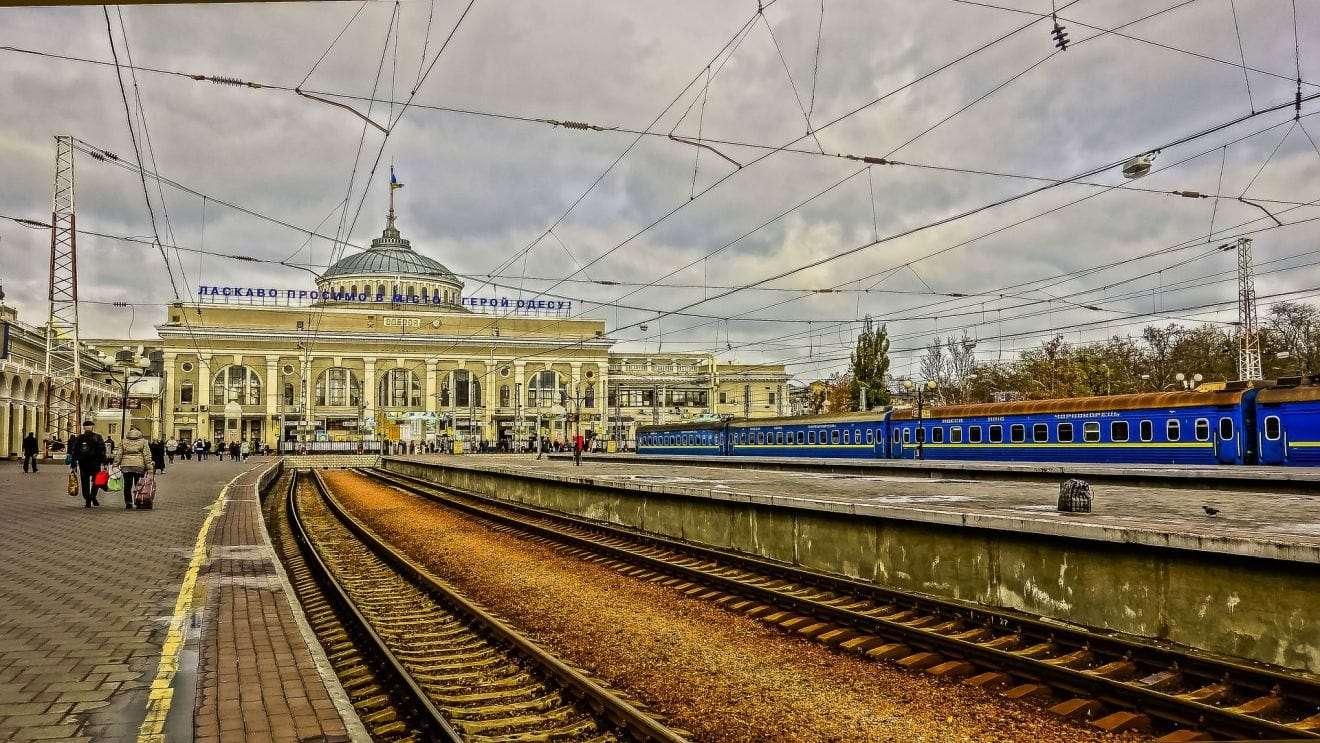
This is the most reliable way to buy tickets. You go to the station, queue up and buy them at the counter using cash or a card.
At the station, look for a sign saying Кассы (Kassy). There is a dedicated counter for international services.
Benefits:
- You can use cash
- You get a real ticket that you can keep as a memento. Real Russian train tickets are beautiful – see above
- You are not dependent on mobile devices working
Drawbacks:
- Welcome to Russian queueing (see below)
- You have to explain yourself to an impatient ticket seller in a foreign language
- If you buy last minute you may be separated from your companions or placed near the toilets.
The Russian Virtual Queue
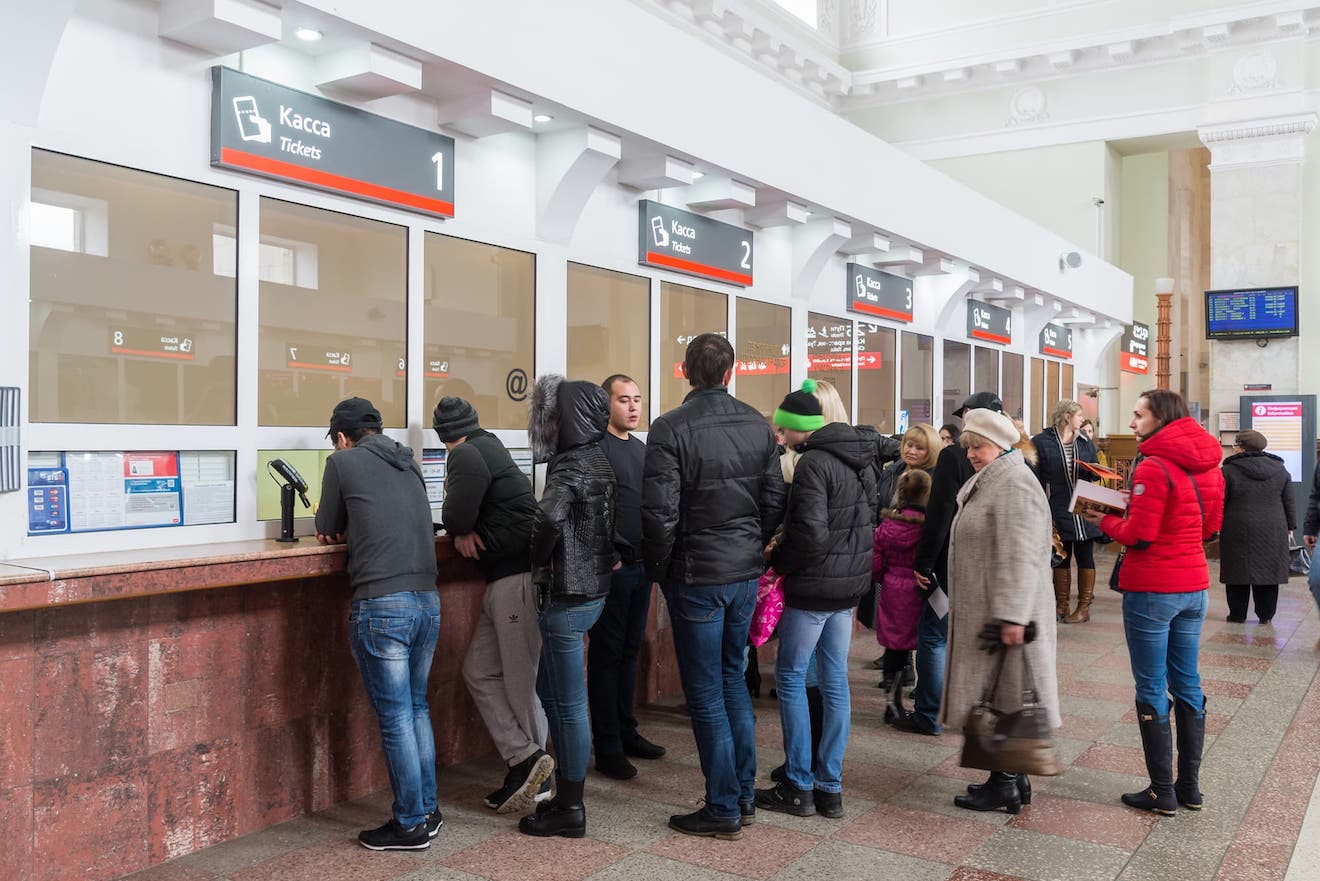
If there is no numbered queueing system, you are in for a real cultural experience. The Russians have preserved an efficient set of unwritten queueing rules from Soviet (or even Tsarist) times.
As you near the front of the queue, someone may come and stand in front of you and say they were there before you. The person before them will say this is true.
Welcome to the Russian virtual queue. In communist times this allowed people to be in three lines at once, which made shopping for stuff that wasn’t readily available less of an ordeal.
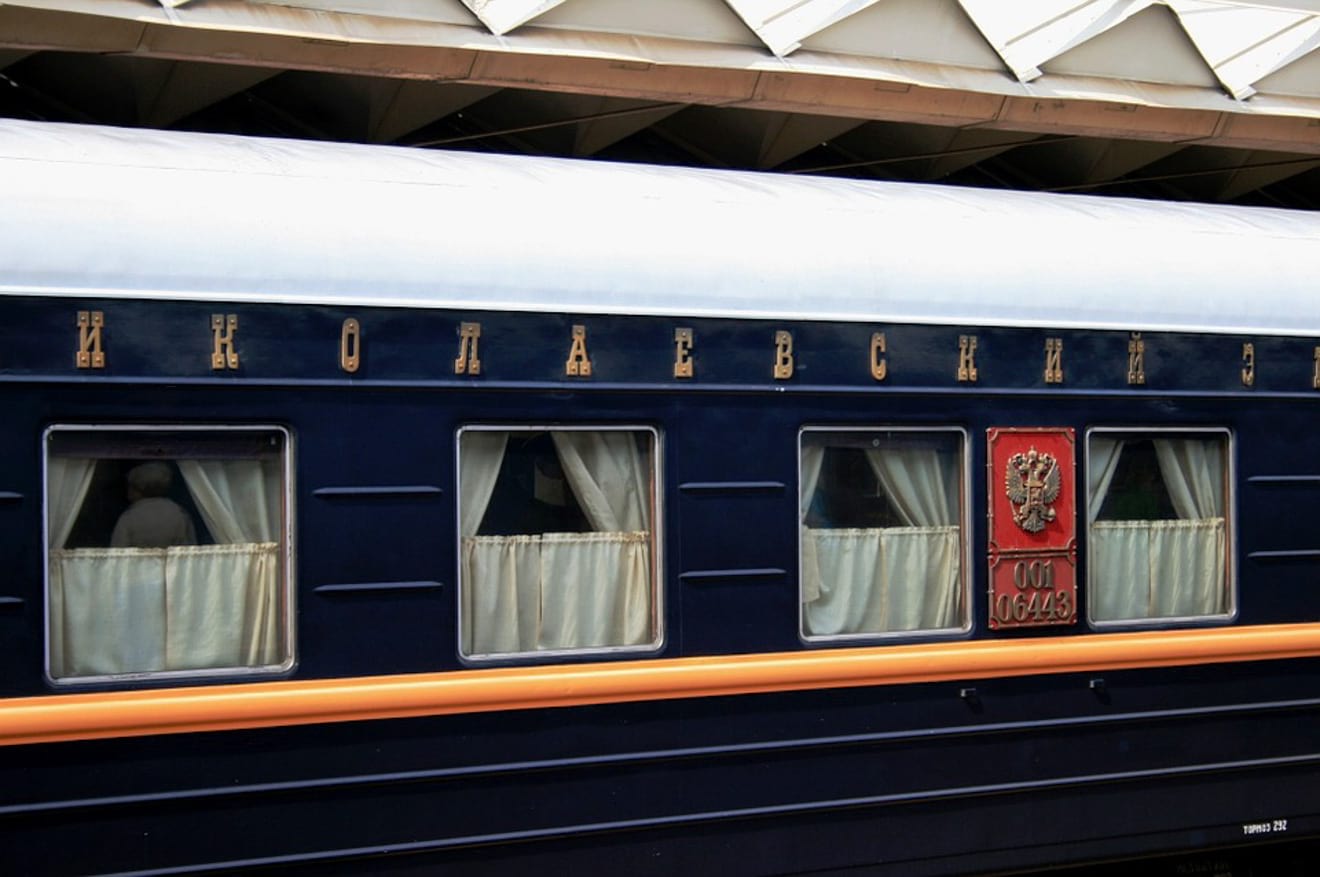
Flabbergast a Russian with your insider’s queueing smarts
- When you join the queue, say loudly to the world in general: “Kto zdyes paSLYEDny?“ (Who is the last here?)
- Someone will say that it is them. Say: “Ya BUdu za VAmy“ (I’ll be behind you)
- Wait for someone to join the queue behind you. Raise your hand when they ask who is last
- Go and have a cup of tea, a cigarette or join some other queue. Just make sure to check back
- Bonus step: before it is your turn, stand in front of an unsuspecting foreigner and gruffly say “Ya SLYEDuyushy“ (I am next) and then ignore them.
If you remain in your queue make sure to stand really close to the person in front of you. That means close enough to give them a bear hug.
There is no such thing as personal space in Russia. Get used to this by going on the Metro during rush hour.
I’ve queued at Russian stations. There are better pastimes. If you can’t avoid it, click here to get my FREE Russian Ticket Template for buying tickets without having to speak Russian.
PRO TIP: Skip the line when buying tickets to Russian trains AT the station:
You will find ticket machines at all major stations. You can pay with your card there and they have an English option! I have used these machines and find them easy to use. Keep in mind that you will have to have your passport ready and enter its number. Make sure you get this right. If it asks for your patronymic, just put a “-“.
2. How to buy tickets for Russian trains online
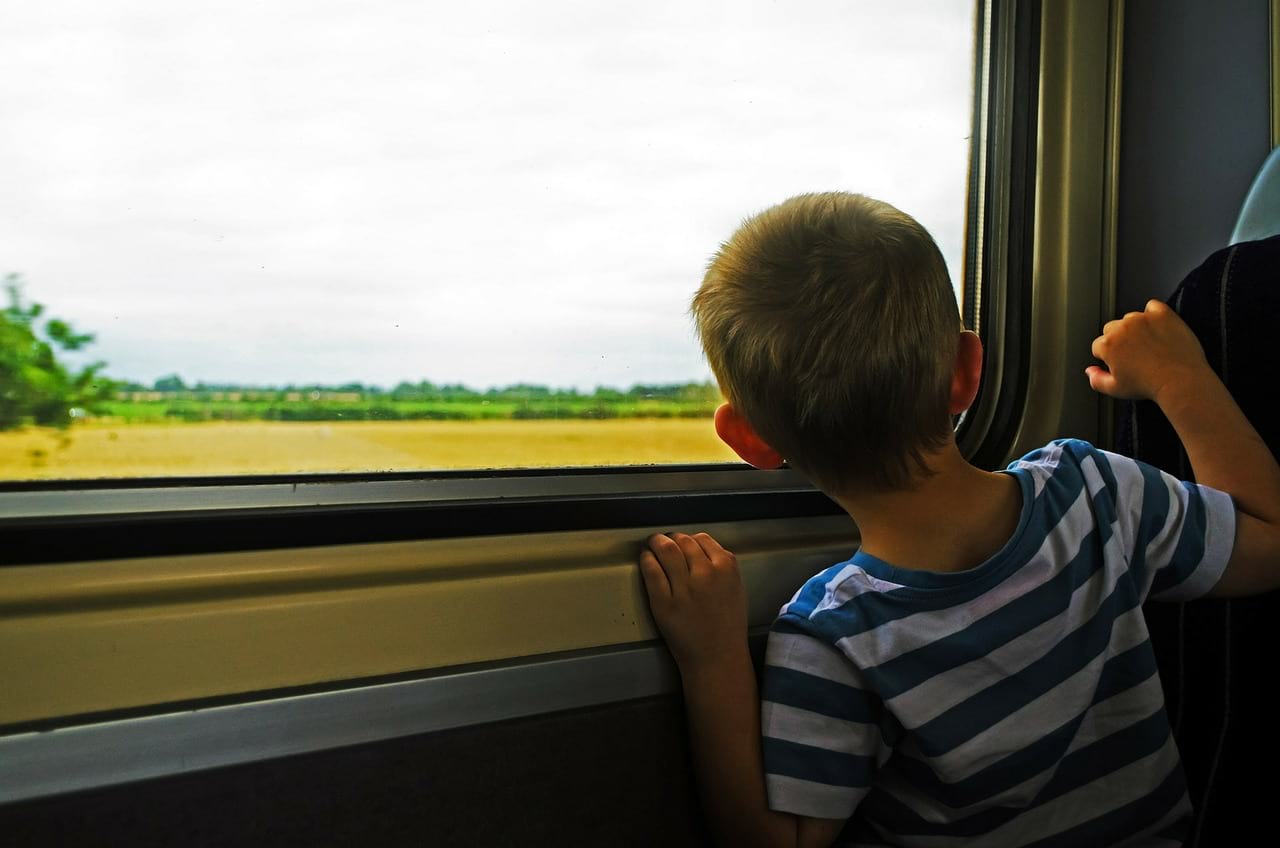
2. How to buy tickets for Russian trains online
The Benefits of Buying over the Internet
- No queueing
- You can buy your train tickets before you even set foot in Russia
- Your ticket is both in English and in Russian – you can read it without learning a new alphabet.
The Drawbacks
- No pretty ticket to treasure as a memento
- um… that’s it.
Before you book anything, remember:
- Not all trains allow you to have an E-Ticket. Look for the ЭР icon, showing that the train allows e-tickets. “ЭР” stands for elektronnaya registratsiya, meaning electronic registration. Then you can print your ticket at home.
- If this icon is missing, tickets purchased online have to be picked up at the station, either from the kassa or from the machine in Russia. If your journey begins outside Russia, you have no access to your tickets.
a) Buying your train ticket from the official website
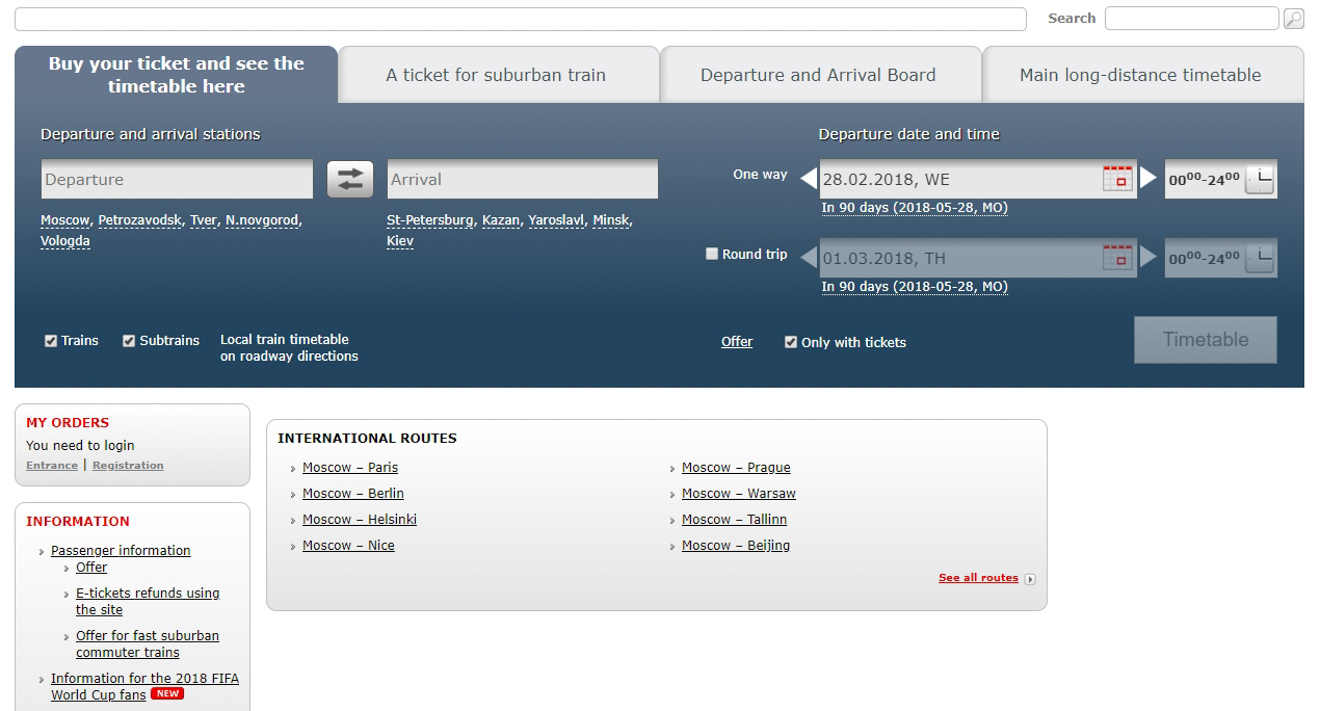
You can buy your tickets over the internet from the Russian Railways’ own website. Visit pass.rzd.ru and select the English option. You will have to set up a user account.
To issue your ticket, you then enter your data, choose your berth on a little map and are issued a ticket which you can print out or save on your mobile device.
Make sure you enter your data correctly or you will not be let on the train. That includes your passport number.
I love this site. Yulia thinks it could be more user-friendly, and I’m sure she is right.
One drawback is that it has been known to reject credit cards. Western anti-Russian hysteria seems to be at the bottom of this, especially with American credit cards.
My German-issued card works fine with it.
b) An easy way to book a ticket for your Russian trip
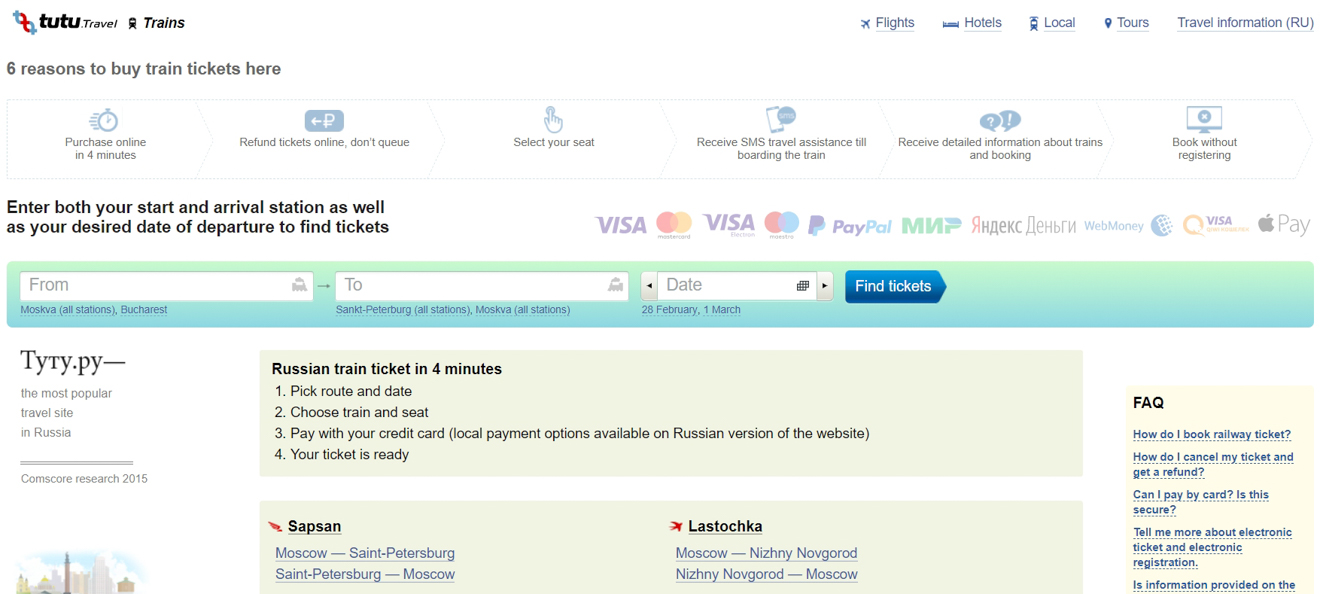
Tutu.travel gets you tickets for almost anything that moves within Russia, as well as hotel bookings. They accept all credit cards, Paypal as well as cash paid into terminals.
How much does it cost to take a Trans Siberian train?
Russian trains are built for interminable journeys. Most trains have three classes.
To go into how much it costs to go to different locations would make this post very long and boring. Prices vary according to the time of year and the train you choose.
What I am going to do now is write about how much each class costs if you were to go from Moscow to Ekaterinburg, where our Miss Tourist hails from. The journey takes 27 hours. This should give you some perspective.
3 Classes on Russian Trains – what is the difference?
Each coach has two guards (the provodniks) who take turns on duty. You board through the door at which your provodnik is standing by showing your ticket and passport. Without showing your ticket you cannot get on.
Let’s assume you made it onto the train at Blagoveshchensk. There is a jolt, then, barely perceptibly, it lumbers into motion. Rousing music crackles from the megaphones on the platform as you head out.
Here is a video of this happening.
Which of the three classes do you want to travel in?
1. Go Third Class (Platskart)
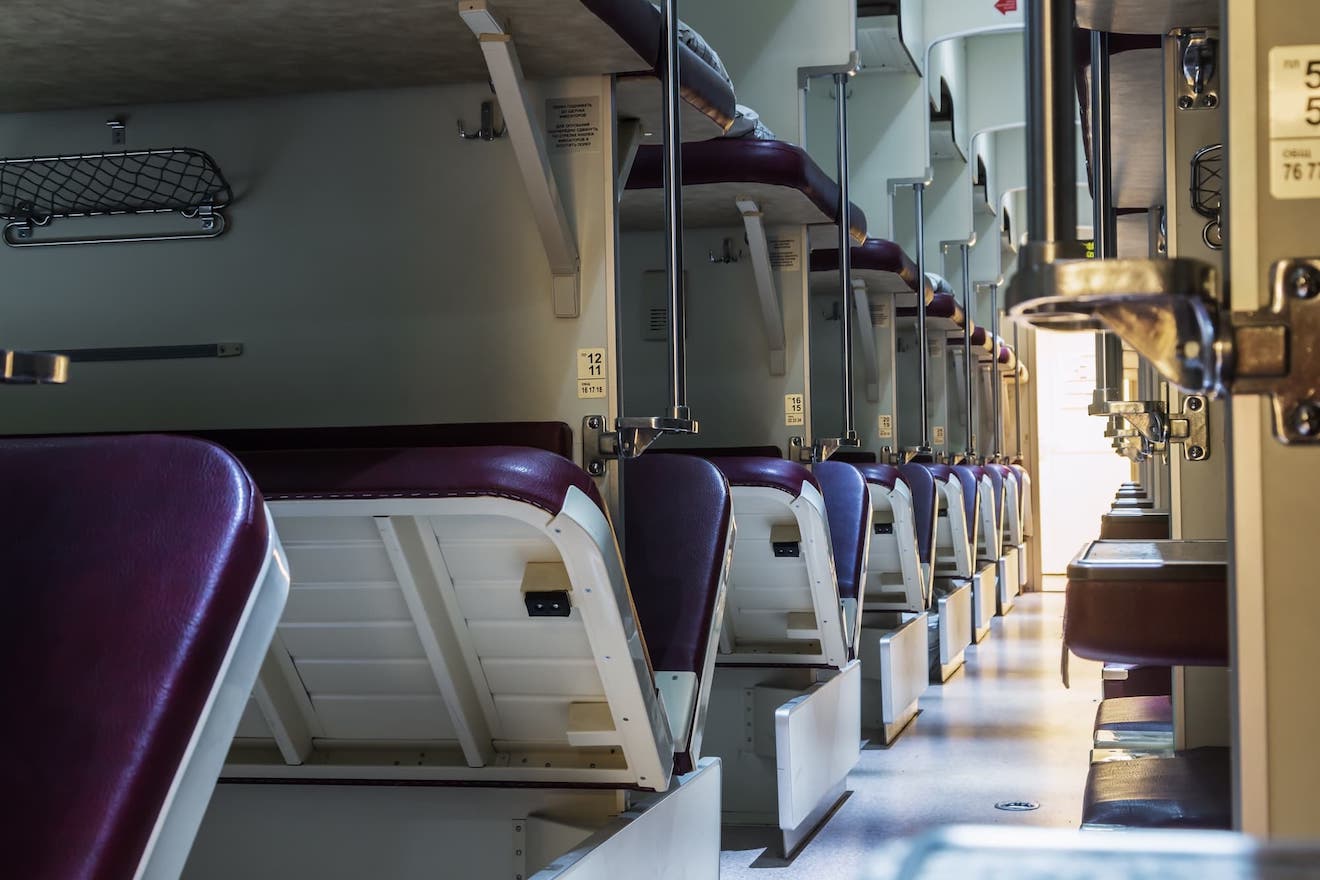
You could go in platskart, the Russian third class, if you don’t mind forgoing your privacy. There is no such word in Russian. The concept is alien to the Russian view of the world. Nowhere is this better illustrated than in the platskartny vagon. Platskart is an open plan sleeping car, a mixed-sex dormitory on wheels.
Platskart has nine virtual compartments. Each has six berths – two lower and two upper bunks perpendicular to motion on one side of the corridor, one lower and one upper bunk on the other side, riding lengthways. It has 54 berths altogether.
You should not worry about robberies on the trains. It is actually very safe thanks to the openness. People will watch your stuff for you!
What is great about platskart is that you immediately make friends and within five minutes are sharing food with strangers and hearing tales of their family. Everyone can see what everyone else is doing and everyone looks after everyone else. For the duration of the trip you are all in this together. You are family and that is a nice feeling.
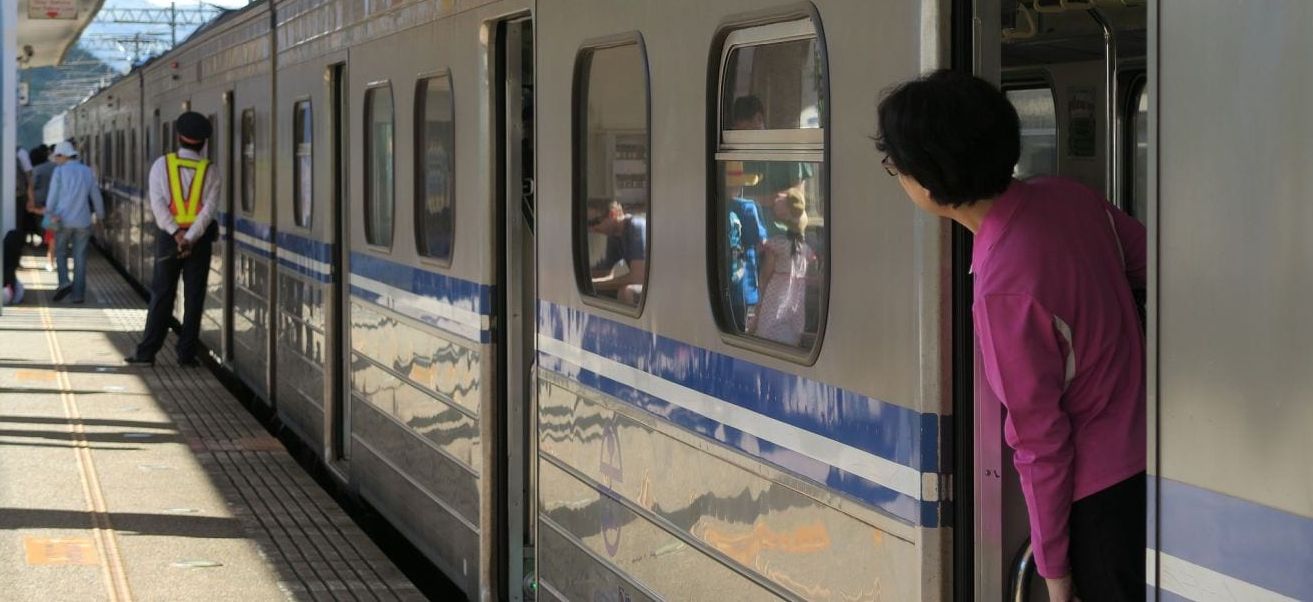
The drawback is that you see these people day in, day out, awake and asleep. After three days nobody can stand the sight of anybody else. If the carriage is full, the air can become atrocious.
Once I was on a Ukrainian platskart from Odessa to Lviv with sealed windows and no air conditioning. At 6 am I was nearly sick from the smell of feet, garlic and morning breath.
I love platskart. It is hard to imagine a more Russian experience. Go for this option if you want the real thing and if you want to save money.
PRICE: Moscow to Ekaterinburg in platskart costs between 2400-3800 RUB (35-55 EUR). Check your price here
2. Go Second Class (Kupe) For Space
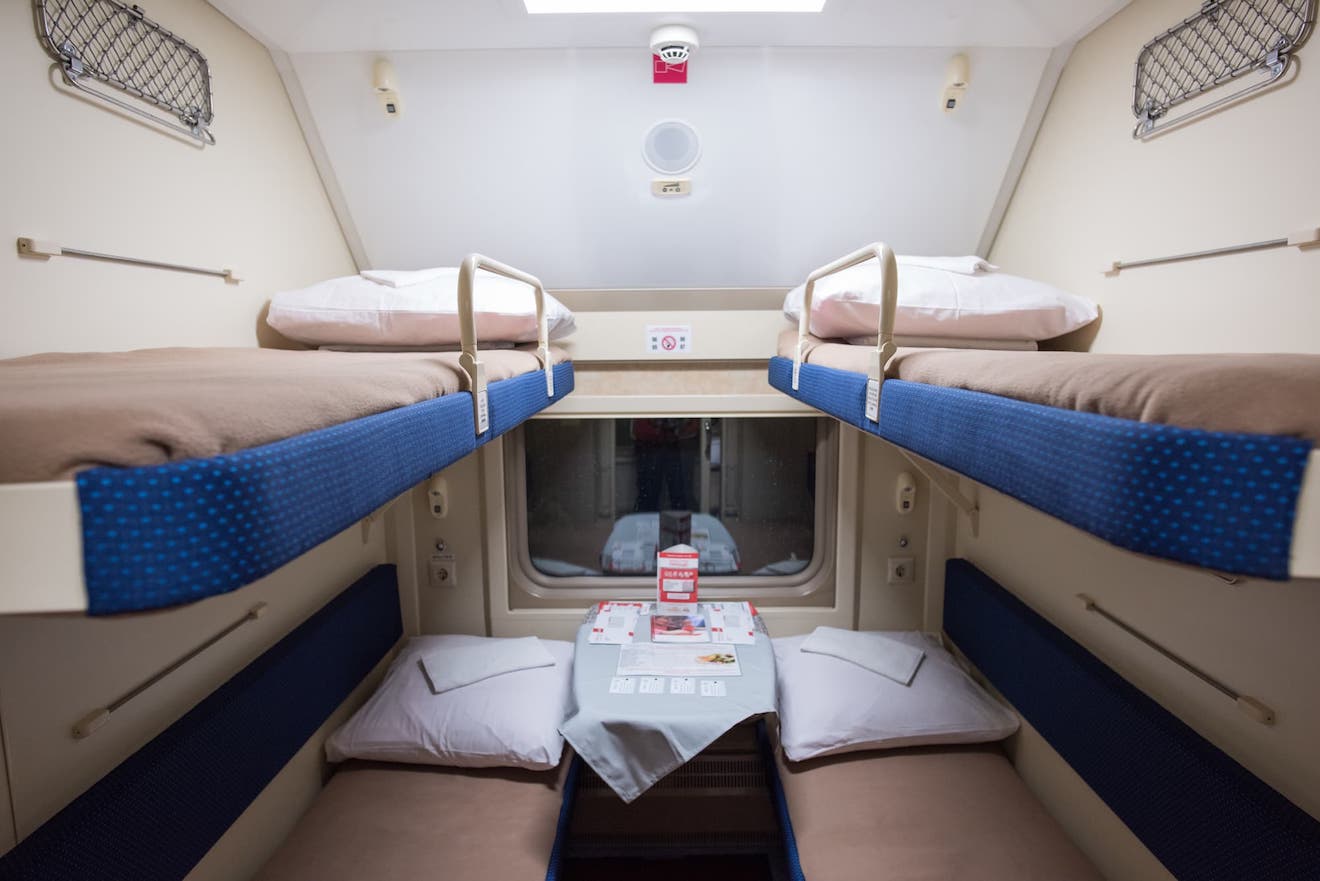
The next option is called Kupe, pronounced cooPAY – the Russian second class.
A kupe car spreads 36 people over nine real compartments. This is four bunks, two lower, two upper, in a compartment with a door you can close and lock. Said bunks are longer than those in platskart.
More civilised and peaceful, more air to breathe and space to move in, it is much like the European 4-berth couchette.
But kupe is more of a lottery than platskart. You are shut in with people, so here’s hoping they’re nice. Once I spent the night in a Russian kupe from Vorkuta to Moscow with oilmen from Volgograd, drinking vodka (made from mosquitoes, judging by the singing in my ears the next morning).
But that’s the worst thing that happened to me – it’s typically a great evening, making friends for life I’m unlikely ever to see again.
All my other kupe trips were uneventful.
Kupe is a good compromise between money and comfort.
PRICE: Moscow to Ekaterinburg in kupe costs between 3,500-5,200 RUB (50-75 EUR). Check your price here
3. Solitude and free slippers in First Class
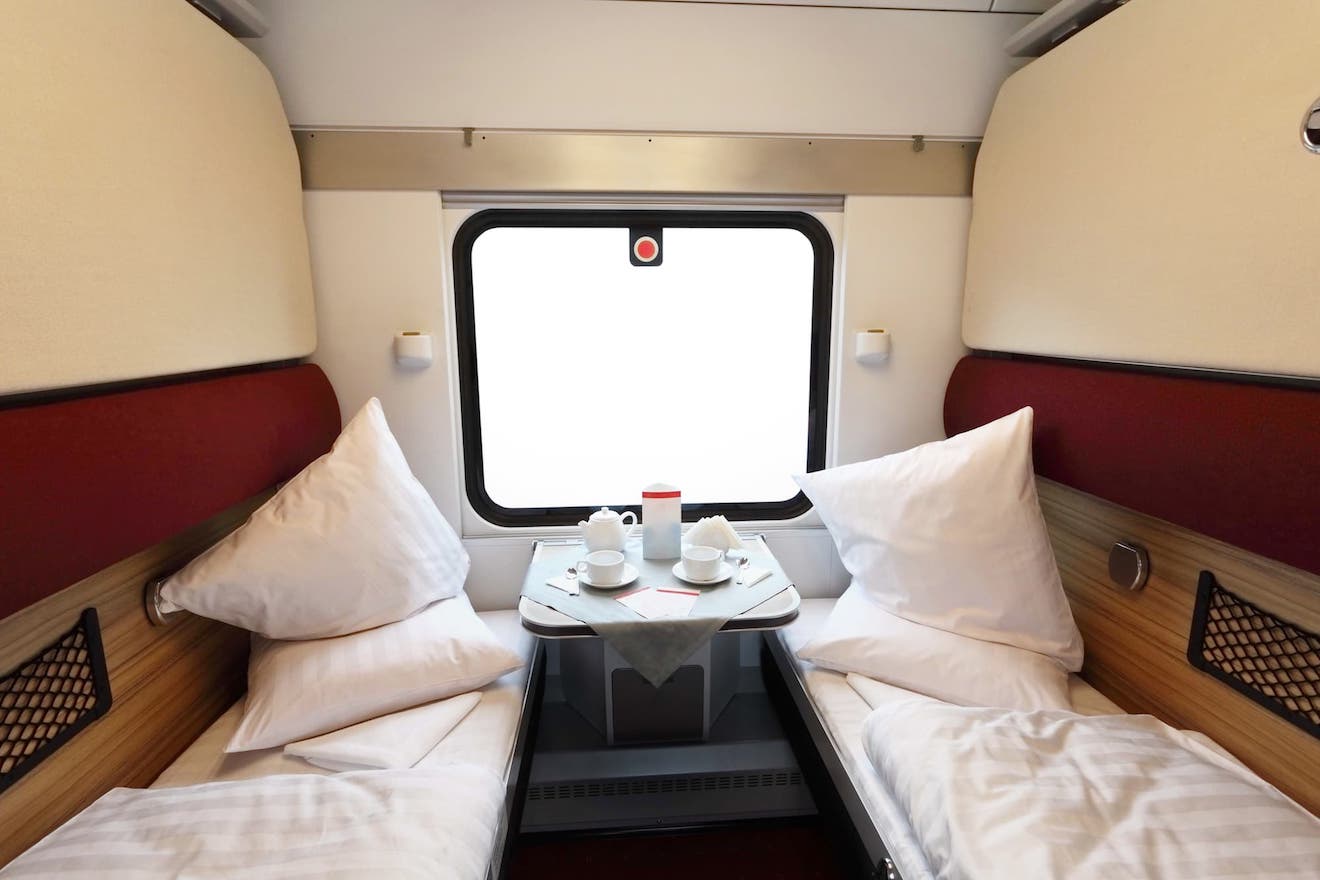
Spalny Vagon, usually called simply SV (say: Es-Vay) means sleeping car. Two berths in a compartment with a door you can lock. Plus lots of cushions, carpet, tassels und curtains.
A spalny vagon fits 18 people into nine real compartments. Usually two people book this, but when booking online it is easy to choose an empty compartment to maximise the chances of solitude. Some trains have even more luxurious Luxe compartments with en-suite bathrooms.
SV is a wonderful way to travel. I love being alone with an endless landscape, drinking endless tea and having endless thoughts.
I will always remember the reflection of the cathedrals in the Vologda River, seen from the window of my SV during a white night. It was just me and the view, and it was marvellous.
The downside is that SV is expensive.
Moscow to Ekaterinburg in 1st class costs from 6,500-12,500 RUB (95-180 EUR). Check your price here
So which class should you choose?
The Yiddish writer Sholem Alejchem wrote about his rail journeys as a travelling salesman in Russia in 1905. He said one should always go third class because in second and first class you will die of boredom.
Here is what I recommend:
Mix third and first class and go second if you have no choice.
Subscribe here to get up to 35% off your accommodation for your next trip!
What I wish I had known before taking the Trans Siberian train
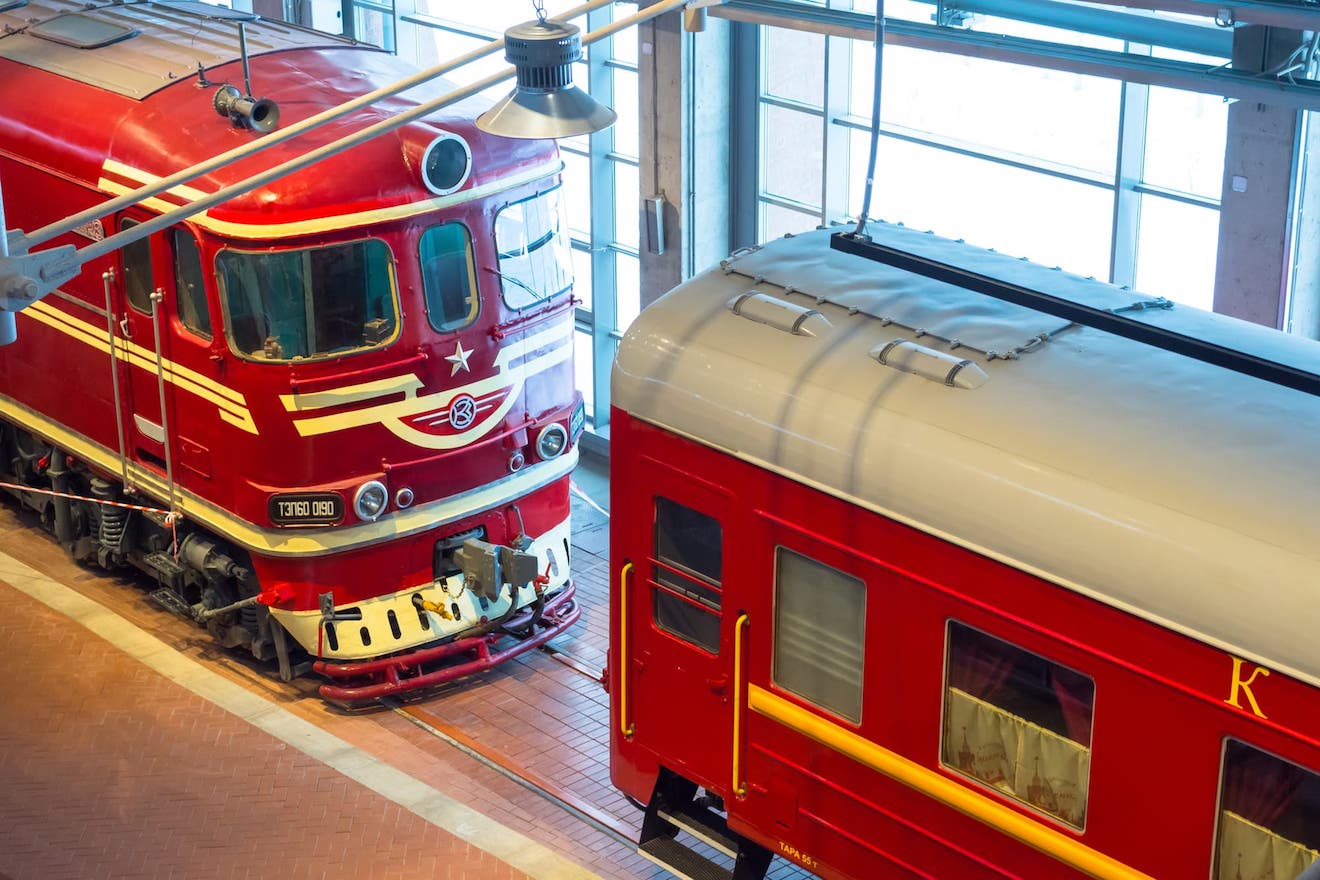
In practice you get whatever train you can, but know these differences – when I went on my first Russian style train I had no clue.
1. Fast and “Firmenny” – trademarked trains
Some trains are better than others. By better I mean newer carriages, elite staff, matching china.
In Russia, the best trains fall into a category called Firmenny, (think of the English word Firm) which translates as trademarked or branded. Often the train has an evocative name like Polarnaya Strela or Yenisey. Russian Railways claims that on Firmenny trains no carriage is older than 12 years. The staff have special training. Meals can be included.
Tickets for these trains are more expensive, but you get better service and comfort even in platskart. Most coaches have air-conditioning (great in platskart, see above) and most berths have power outlets.
2. Slow “Passazhirsky” – passenger trains
These are the slowest trains with the oldest carriages and the most basic service. Tickets for these trains are cheaper.
How to Know Russian Trains at a Glance
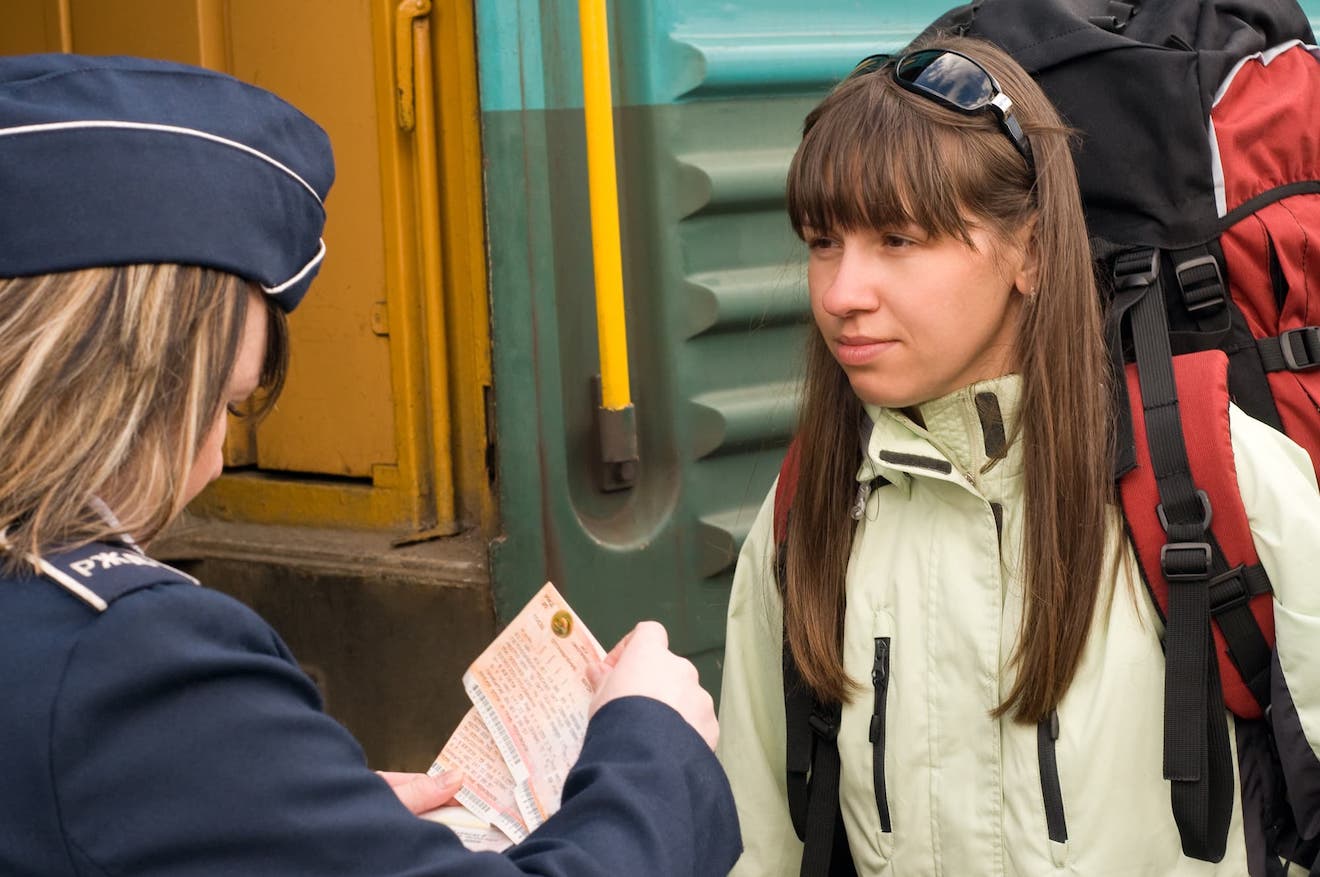
Embrace your inner geek and look at the train numbers. According to Russian Railways,
- Nos. 1-150 are regular, year-round fast service, many of them firmenny
- Nos.151-298 are fast, seasonal services
- Nos. 301-450 and 601-698 are regular, slow, passazhirsky services
- Nos. 401-598 are seasonal, slow, passenger passazhirsky services.
Thus train No. 1/2 is the firmenny train Krasnaya Strela, (Red or Sublime Arrow) between Moscow and Saint Petersburg.
It has special red coaches, its name on its tea cups and has been leaving both Moscow and Saint Petersburg at 23:55 every night since 1931, covering the distance in eight hours.
Only the best and most experienced staff are qualified to work on it.
Short distance trains

These are all trains with normal seating for journeys no more than six hours. Russian Railways names its newest trains after fast birds to evoke speed.
- Sapsan (“Peregrine”)
Highest speed train in Russia. Reaches 250 km/h between Saint Petersburg, Moscow and Nizhny Novgorod.
Has airline classes: First, Business and two Economies.
- Strizh (“Sparrowhawk”)
Brand new fast train between Moscow and Nizhny Novgorod. Also runs between Moscow and Berlin, see international services below. Has first and second class seating as well as spalny wagon.
- Lastochka (“Swallow”)
Fast short distance trains, used for inter-regional and city services, especially the new Moscow Ring Railway.
- Elektrichka (“The Little Electric One”)
Soviet era, slow suburban services. Elektrichkas have only one class with wooden benches and no toilets. Tickets for these are sold at special suburban-train ticket offices (пригородные кассы – PRIgaradnye KAssy), as they have unlimited availability and you don’t need your passport to use them.
Russian International Train Services
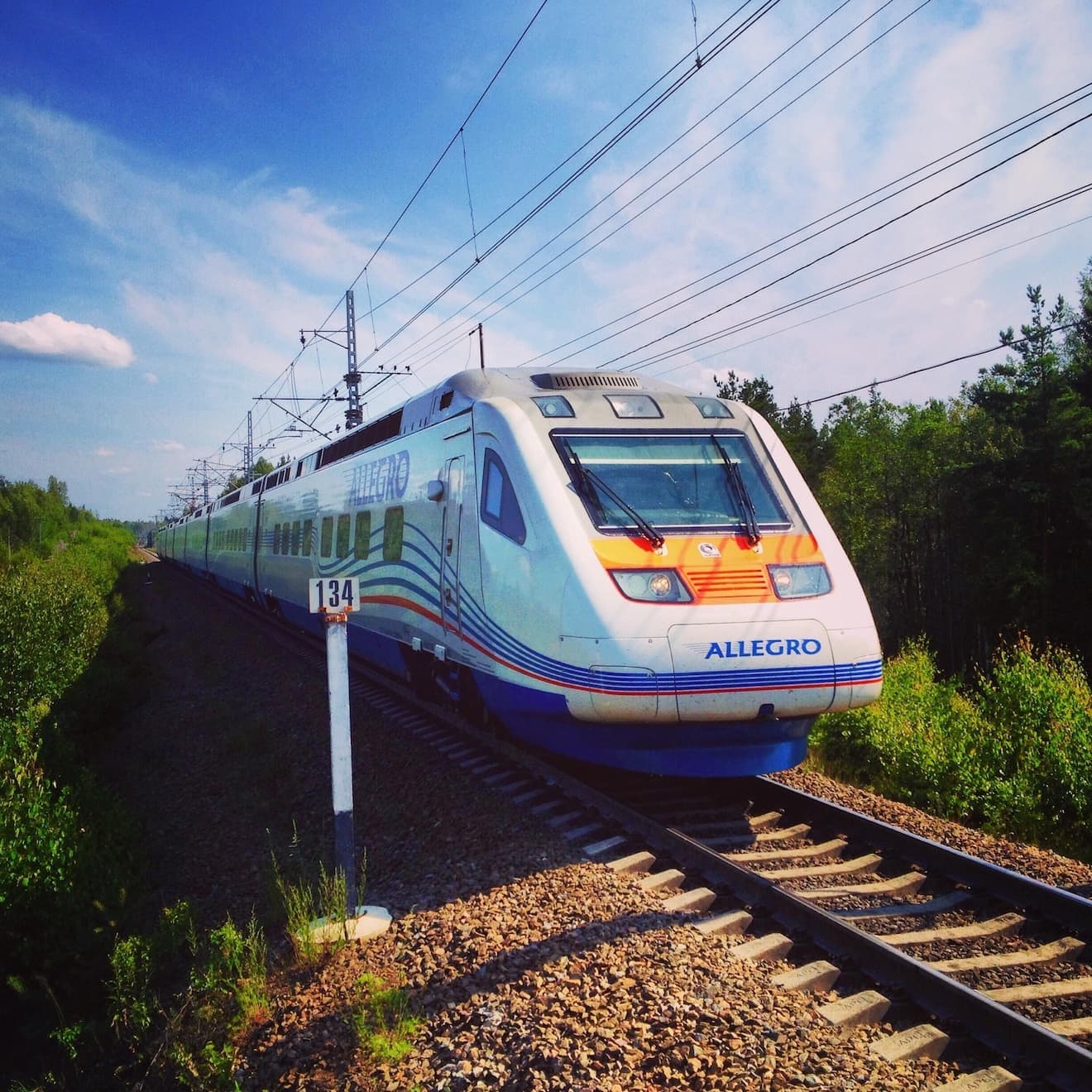
Russia has amazing international trains, including the very best services in Western Europe.
Western Europe Trains
- Allegro Train
High speed Pendolino train between Saint Petersburg and Helsinki. Leaves Saint Petersburg four times a day and whisks you to Helsinki in three-and-a-half hours. Has first and second class carriages.
Be careful – this train tilts in the corners. This makes some people feel sick. Once I had to get off a Swiss pendolino at Biel and put my head between my knees. Though that may have been because I had paid €8 for an abominable cup of tea.
- Moscow-Saint Petersburg-Helsinki “Lev Tolstoy”
Daily overnight firmenny service between Moscow, Saint Petersburg and Helsinki. This service has kupe, SV and Luxe carriages, but no platskart. The Lev Tolstoy even has a car carriage, which rich Muscovites use to take their Land Cruisers with them to Finland.
- Moscow-Warsaw-Berlin “Strizh”
My next project is to go on this one, the weekly service between Moscow and Berlin Ostbahnhof using Spanish-built hotel trains. It has first and second class cars with seats (I don’t recommend these for long distances) and kupe and spalny vagon sleepers.
Europe’s Ghost Trains

My favourites. European rail experts and writers of Europe by Rail Nicky Gardner and Susanne Kries once referred to them as “Europe’s Ghost Trains”.
Russian Railways has two weekly services silently plying Europe from East to West and back, stopping in the very best locations.
No Western European knows about them.
If you buy your tickets from pass.rzd.ru (remember, there is an English option) it is possible to travel on them. I went on the Moscow-Nice express from Nice to Innsbruck and it was awesome.

- The Trans-Europe-Express leaves Paris Gâre de l’Est at 18:58 on Thursdays, arriving in Berlin the following morning and Moscow the morning after that. In the other direction it leaves Moscow at 20:00 on Tuesday evening, reaching Paris on Thursday morning. It has spotless, luxurious, factory-new coaches and a Polish restaurant car that still cooks real food. The classes it conveys are kupe, spalny vagon and super-deluxe VIP.
- The Moscow-Nice-Express ran before the Russian Revolution, transporting Russian royalty to the French Riviera. This service was recently reintroduced after a 100 year hiatus. It leaves Moscow on Thursday evenings, passes through Warsaw, Vienna, Innsbruck, Verona, Milan and Genoa before reaching Nice on Saturday evening. On Sunday morning it leaves Nice, reaching Moscow on Tuesday morning. The setup is the same as the Moscow-Paris train.
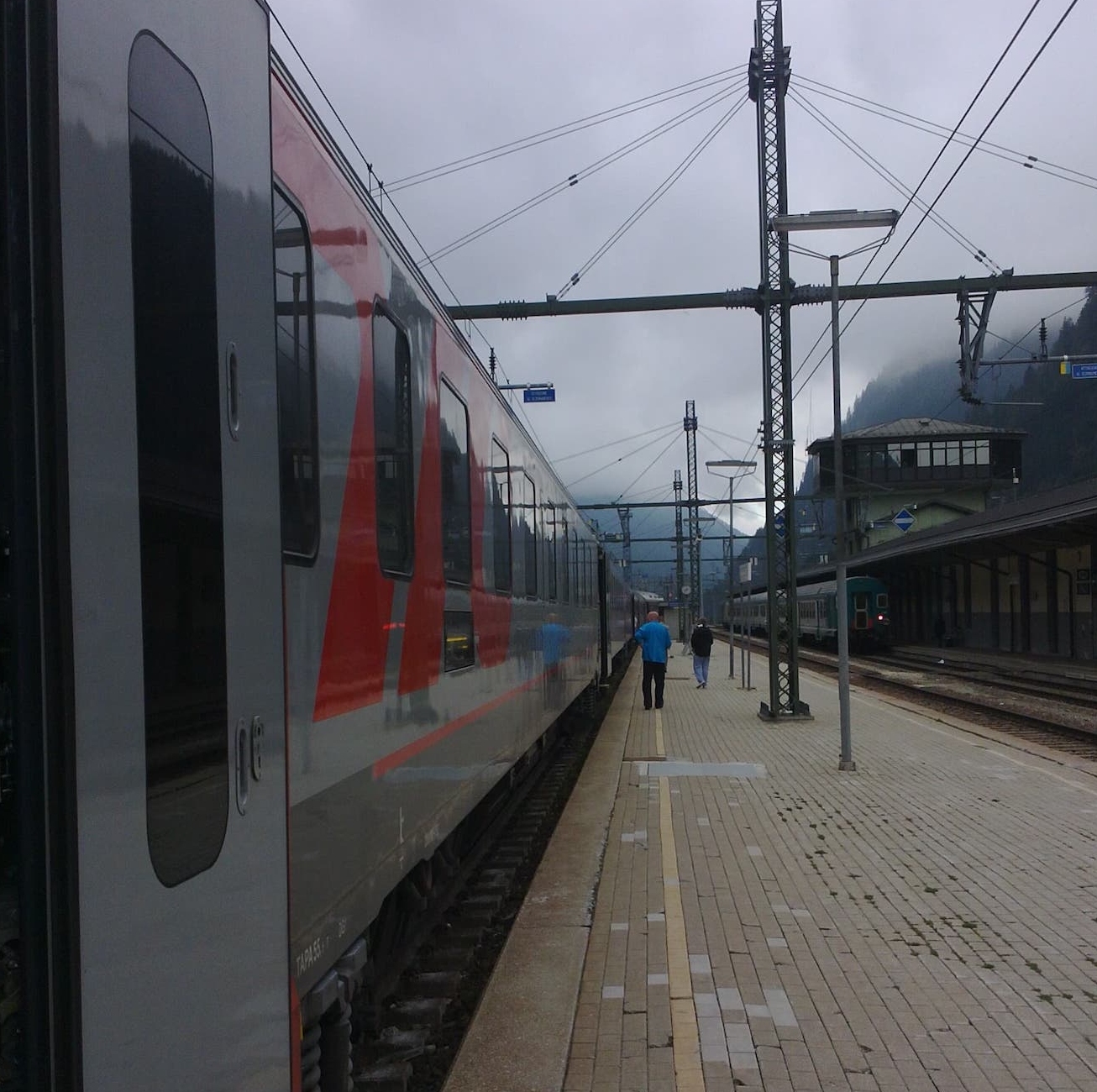
Eastern Europe trains
There are daily services from Moscow and Saint Petersburg to all eastern capitals – Tallinn, Riga and Vilnius as well as Minsk and Kiev. Belarus and Ukraine are especially well connected, with services reaching most major cities.
During the summer there are services down to Budapest, Belgrade, Bar, Varna and Burgas.
The Caucasus train
Avoid this one unless you know what you are doing. Regular services to Azerbaijan, Georgia have been cut off due to the 2008 war over South Ossetia. The only part of Georgia you can reach is the breakaway republic of Abkhazia by way of Sochi. Armenia is also cut off because of ongoing hostilities with Azerbaijan.
To Central Asia
The Central Asian countries Kazakhstan, Uzbekistan, Turkmenistan and Kyrgyzstan as well as Tajikistan are all easily reached by train.
The Far East Trains
There are regular services via the Trans-Siberian Railway to China, Mongolia and even North Korea.
Let’s take a deep breath and have a cup of tea. That was a lot of facts and names I just gave you.
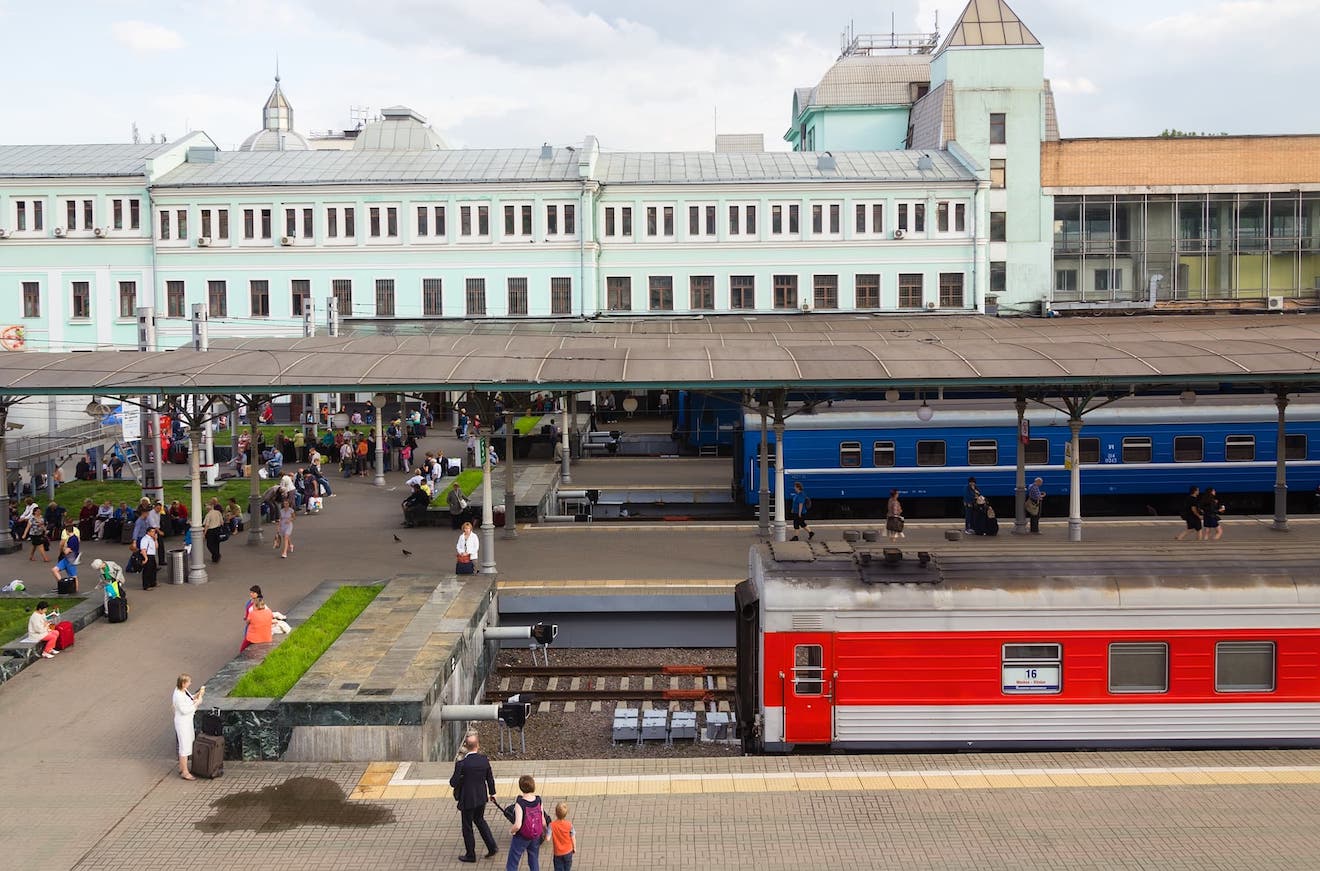
Are you still with me?
Good.
This is where the fun really begins…
The Unwritten Rules of Russian Train Travel Etiquette
Just as queueing is governed by unwritten rules, the Russian train carriage has its own etiquette. The more people together in an enclosed space, the more important it is that everyone adheres to it. Only if you have a compartment to yourself can you do as you please.
Sleeping on a Russian train
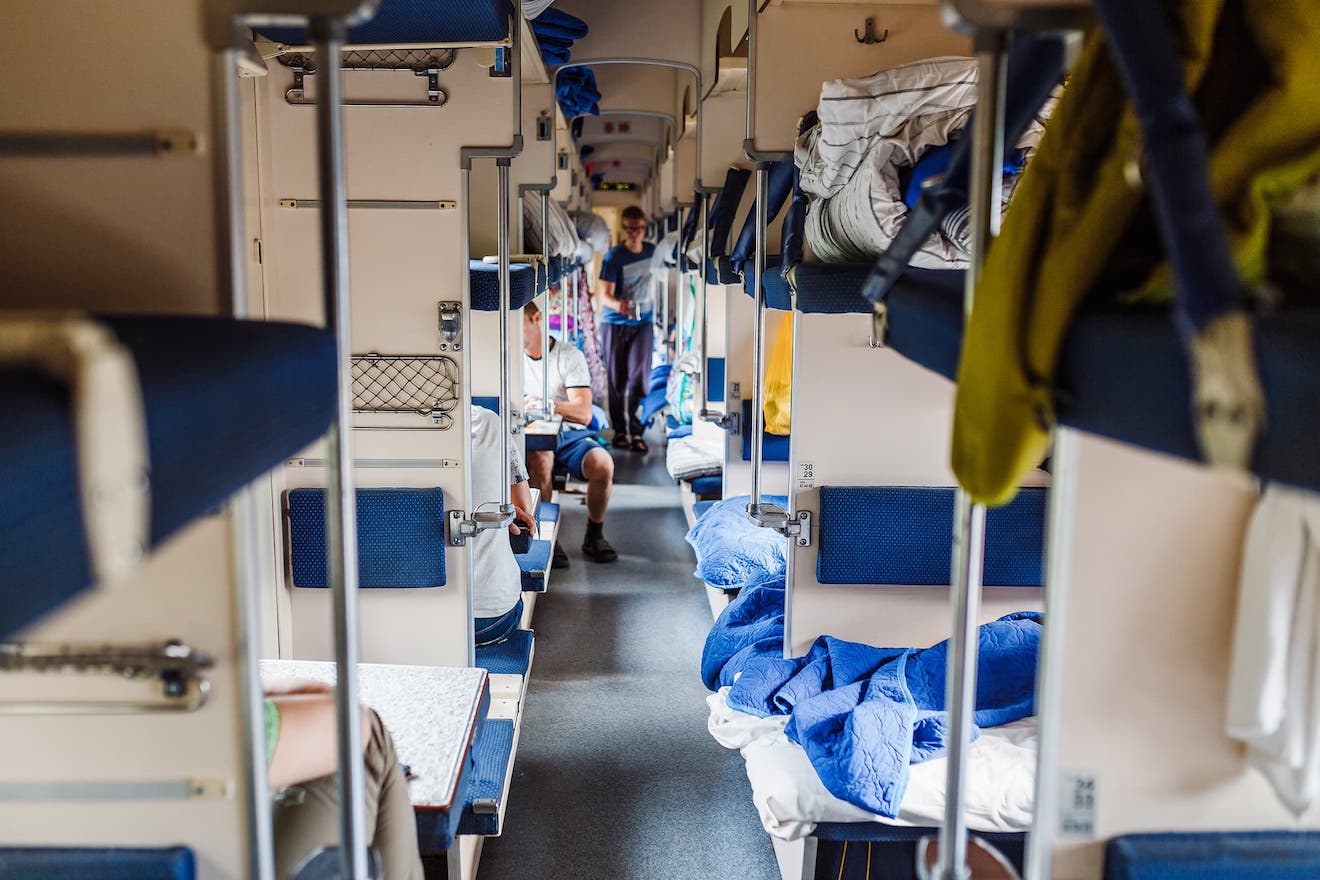
All three classes on Russian trains have day and night modes. In kupe and platskart you are provided with bedding to make your bed yourself, in SV your bed is made for you.
On the top luggage racks, rolled up, there are mattresses and pillows. These you bring down and make up with your sheets. After a couple of trips you will be capable of doing this doubled-over on a top bunk in the dark.
In my experience, people make their beds straight away even if it is hours before bedtime.
The bedding varies according to train and class, but you will definitely have two sheets, one pillow-case and a towel, all in a sealed plastic bag. In SV you may get little luxuries like free slippers, refreshing wipes and shoe polish.
At the end of the journey you fold everything up neatly and bring it to the provodnik. On a platskart from Kharkiv to Kiev I got shouted at by the provodnitsa for giving back my sheets rolled up in a ball.
Which to choose – upper or lower bunks?

If you have an upper bunk, you don’t have to sit there all day.
It is your right to sit on the lower bunk until bedtime, even if the occupant has already made their bed – provided you are wearing house-clothing (see below for what this is).
At some point the occupant of the lower bunk will say that they want to go to bed. Then you should move.
Most people covet the lower bunks. These are good because you don’t have to climb and because you can stow your luggage safely in the box underneath, accessible only by lifting the bunk – and you if you are sleeping on it.

However, upper bunks are good too: You don’t have to tolerate someone sitting on it till bedtime; if you want some peace you just make your bed, climb up and get some respite from the seething platskart hubbub.
After a while the steady rocking and clattering induces a kind of trance in which you lose track of time and space. Thus even though the journey looks long on paper, it passes swiftly.
If you have a lower bunk, it is possible someone will ask if you can swap. You don’t have to do this if you don’t want to. If it is an old lady who can’t climb, you should, though.
Get Yourself some Good Karma – the Invisible Points System on Russian Trains
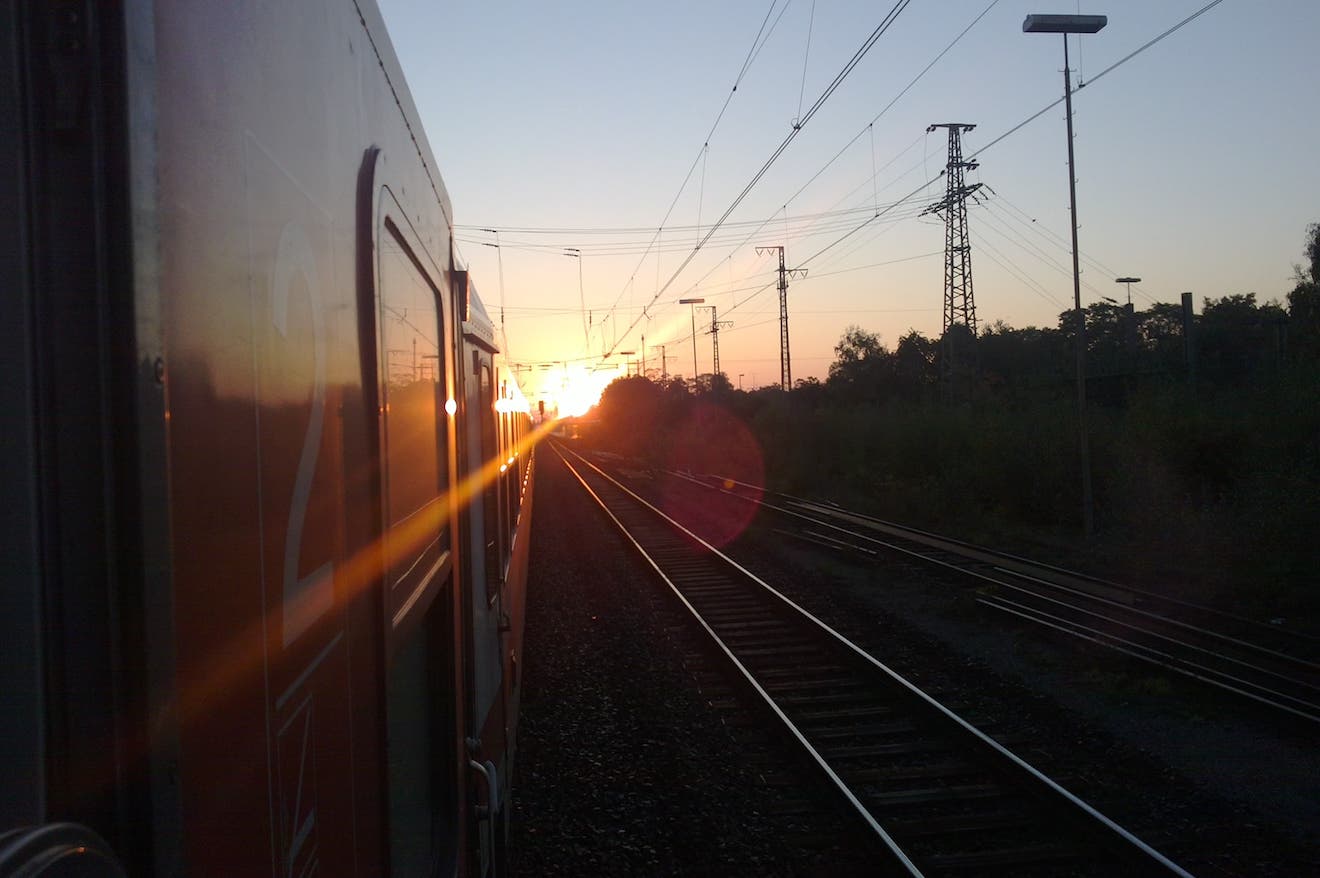
You may be asked to swap by people who want to be together. This is up to you.
There is an invisible points system running, and small courtesies towards others will be sure to come back to you.
On my train from Kotlas to Yaroslavl’ the first thing my comrade asked me was if I could lend him 500 rubles (about €7) so he could load up his phone. His wife would then wire money to his bank account and he’d draw it at the next station.
I decided to pay into the points system as this was at the very beginning of a 20 hour journey. If he wanted more I could still refuse.
He and his friends gave me more beer and vodka than 500 rubles ever could have bought.
What to wear when taking a Trans Siberian train
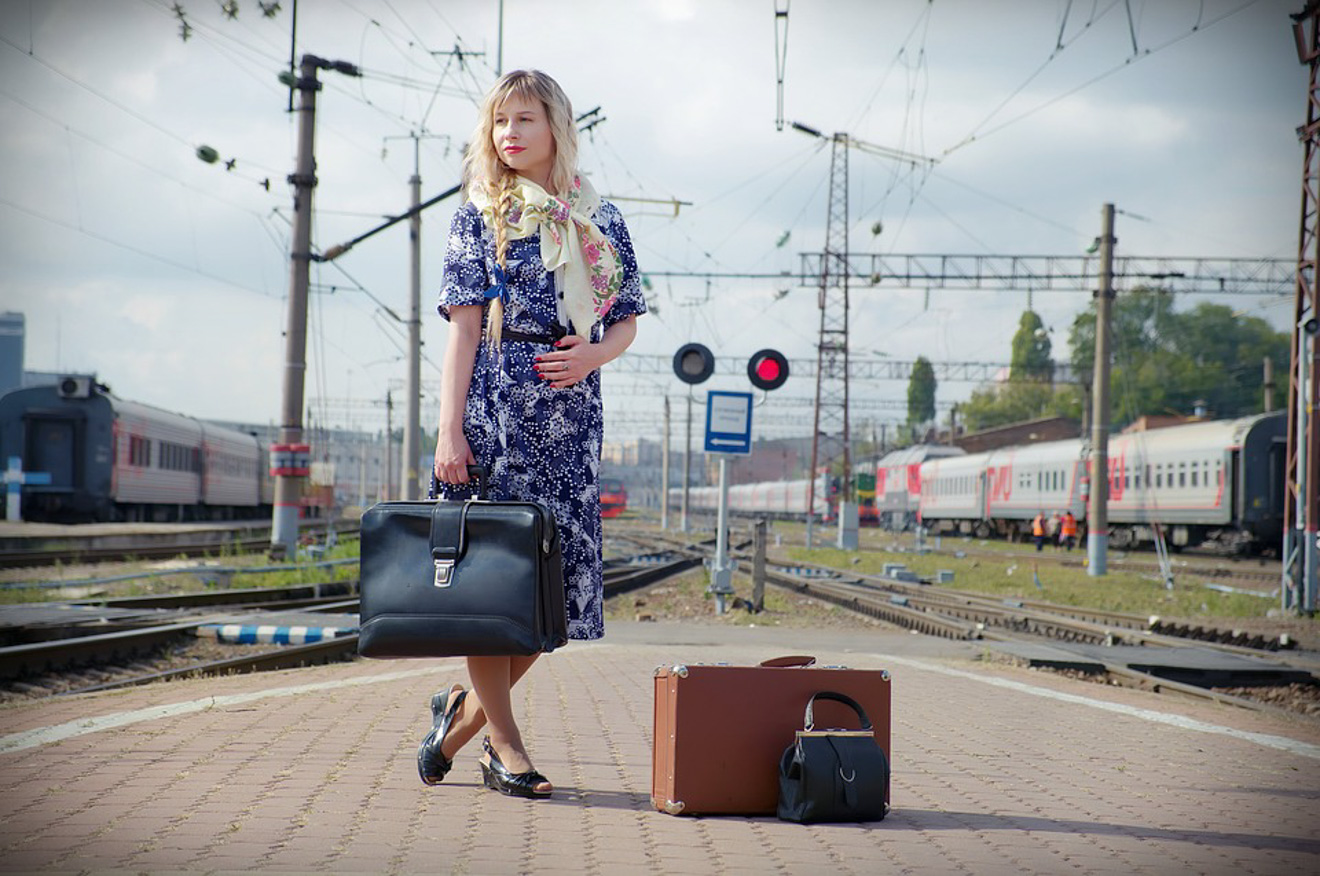
As soon as people have occupied their places, you will notice them change into comfortable house-clothing and slippers, as one would wear around the house on a day at home.
House clothing is to street clothing what slippers are to street shoes. They are perceived as (and probably are) cleaner.
If you sit on someone’s made bed, it would be rude to do so in street clothing. If you are wearing street clothing (honestly, I always forget to bring house-clothing) shift the mattress so you are sitting on the bunk underneath it.
The special status of women on Russian trains

All classes are mixed-sex, unlike in Western Europe, where there are ladies’ couchettes and sleeping cars. But women do not think twice about travelling alone. It is perfectly safe. Platskart may in fact be the safest class for women to travel in, as everyone can see everything.
Women are treated with a courtesy lamentably absent in the West. As a woman, expect people to help you with your luggage. As a man, don’t stand idly by as a lady struggles with her suitcase.
When it is time to get ready for bed, men are expected to leave the compartment while the women change.
And Now for some Written Rules of Russian Train Travel
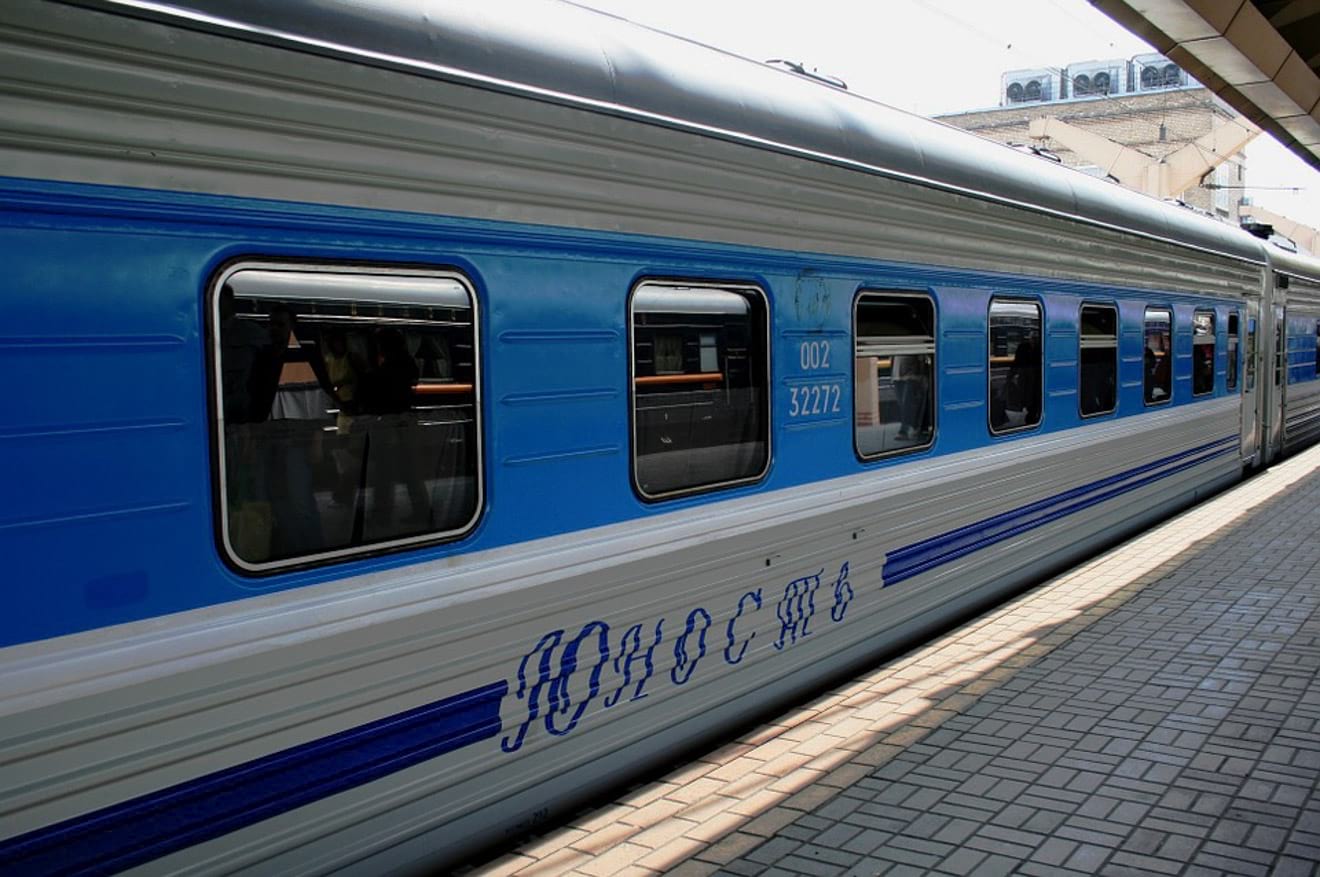
This may come as a surprise if you have read about my mosquito vodka, but hear this:
Alcohol is forbidden on Russian trains.
Whaaaat? Are you trying to say Russians do not drink vodka on the train? Nonsense!
Yes, only in restaurant cars is there beer and wine on sale, and then only to be drunk there.
In practice prohibition works only up to a point. Some of the provodniks have a lucrative side hustle selling beer. At the stations you can get anything from the babushkas (see below).
If you are found drunk and behaving inappropriately, you will be thrown off the train and fined.
The same goes for smoking. Nowhere on Russian trains is smoking allowed.
In the old days (about ten years ago) alcohol was allowed, provided you behaved yourself, as was smoking at the unheated furthest ends of the carriage.
Nowadays the most desperate smoke above the couplings between carriages. Some guards tolerate this.
The official way to smoke is at the stops. These can be quite long (see below).
Fun Things To Do on Russian Trains
Tea
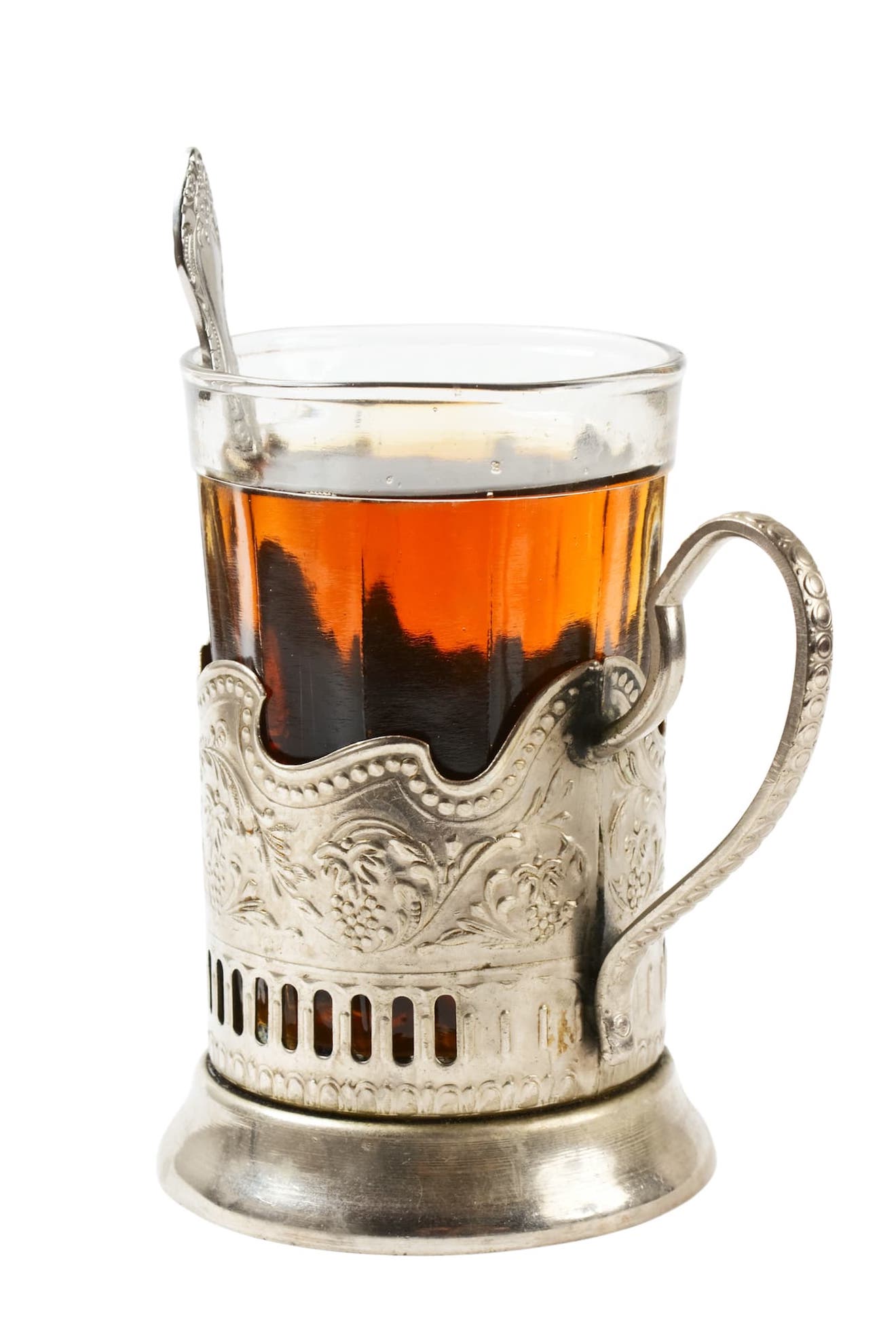
If you don’t drink tea, now is the time to start. After taking your ticket your provodnik will offer you tea (Chai?). In Russia tea is a human right. Tea on the train costs about 20 cents.
If you have your own tea with you (or instant coffee or noodles) you are free to help yourself to the hot water from the samovar next to the provodnik’s compartment.
On Russian trains tea is served in glasses in metal holders with a spoon. The metal holder is usually elaborately decorated, celebrating the 70th anniversary of Victory in Europe, the first space flight or some other marvellous Russian or Soviet feat.
About the glass. This ubiquitous Russian grooved glass was designed in the 1940s, apparently by the same sculptor who created the statue of the Worker and the Peasant in front of the VDNKh.
A Ukrainian once told me it had 15 grooves to represent the 15 Soviet Socialist Republics – I’ve been counting them ever since, and not one had 15.
Enjoy this relic of Soviet industrial design while you can. And let me know if you find one with 15 grooves.
If you don’t want sugar in your tea, say so (BEZ SAkhara) – or the provodnik will just put it in.
Babushkas
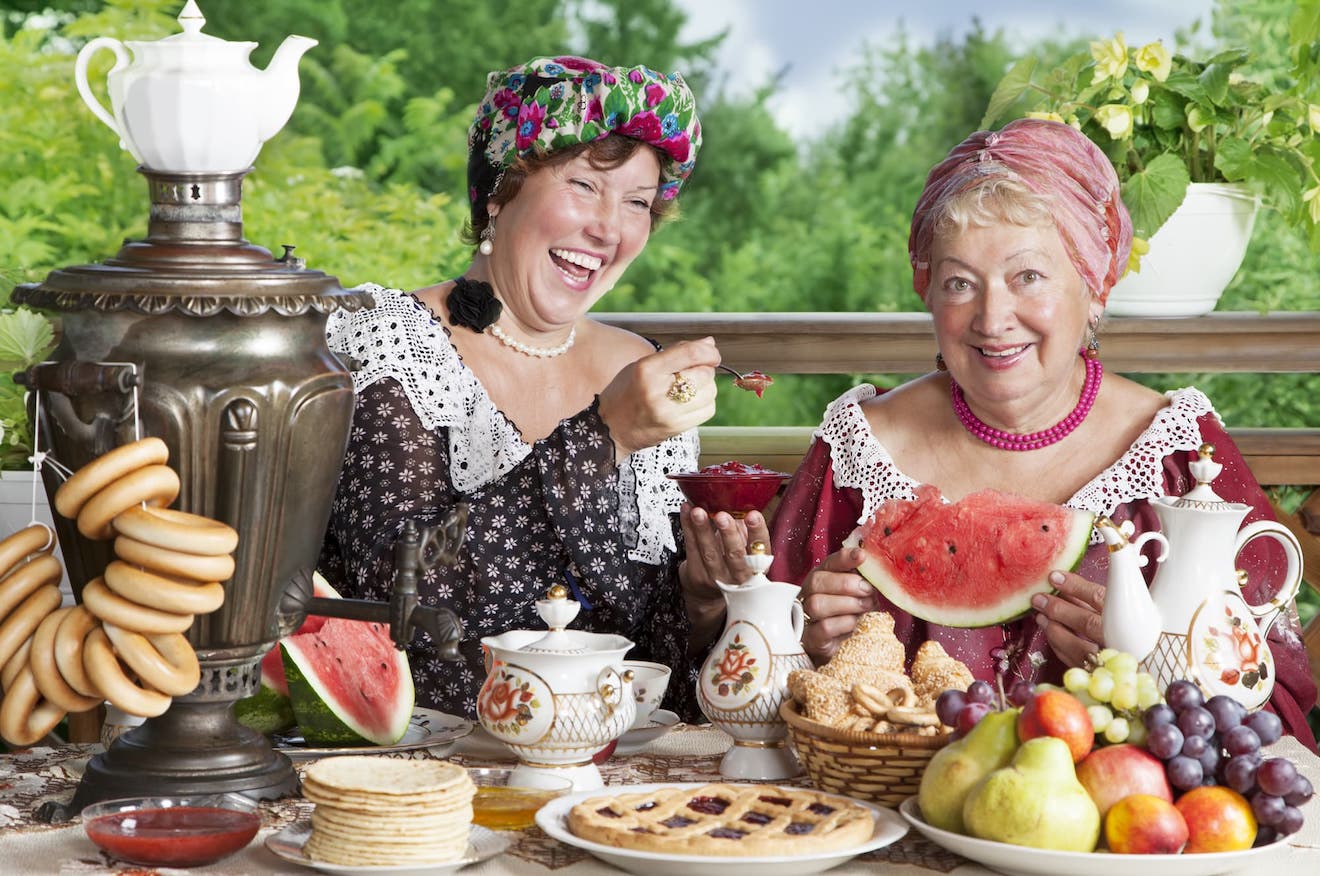
Somewhere near the carriage entrance you will find the train’s timetable. Notice that some of the stops can be quite long – this gives you time to get off the train and stretch your legs.
Are you hungry? There will be old women (Babushkas) selling home cooked food.
Russians I know tell me not to buy anything because of hygiene, but this is ridiculous.
As I write, in England a woman found half a rat at the bottom of a bag of frozen vegetables.

These babushkas haven’t got much of a pension. To make some money they cook food with ingredients from their own garden and sell it at the station. Expect to get apples, cucumbers and any seasonal fruit as well.
My favourites are vareniki (dumplings stuffed with potato and cheese, or cabbage, or mushrooms) and piroshki (small pastries stuffed with potato and cheese, or cabbage, or mushrooms).
What helped me beat the Volgograd oilmen drinking the mosquito vodka was a load of belyashi, bought from a babushka. There is no translation for belyashi. Imagine a doughnut filled with meat, deep fried, dripping with fat. Lovely.
Peddlers
At larger stations the guards may let peddlers onto the train. They have magazines, newspapers and sudokus on sale as well as snacks, toys and playing cards. But I’ve also bought travelling icons, plastic passport covers and poetry from them.
Conversations
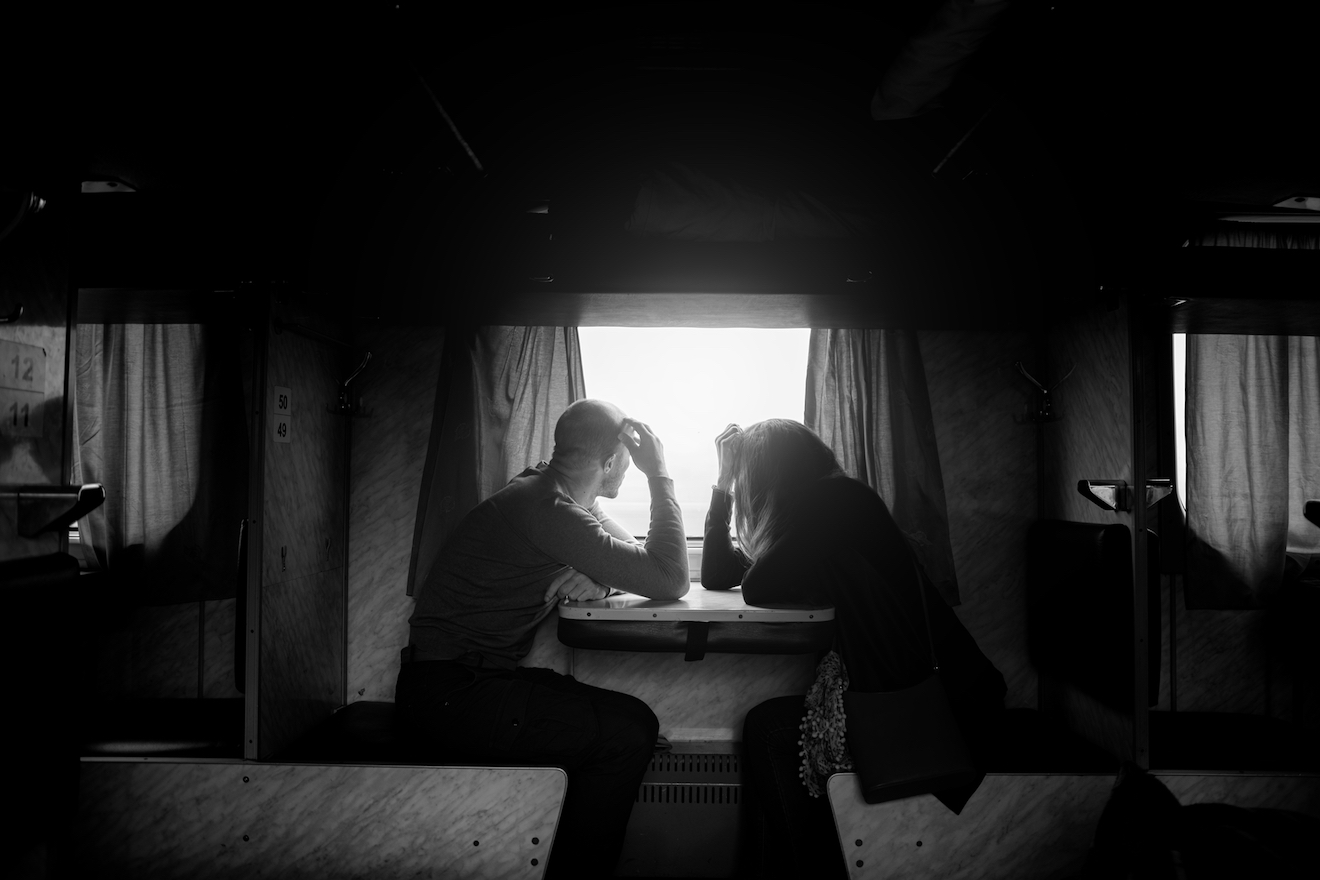
Conversations with strangers are one of the great things about Russian train travel.
In public, Russians are often grim, reserved and closed. The train, however, is a setting in which they open up and talk to strangers about almost anything.
Expect highly cultivated conversation. The range is immense: God, tea ceremonies, football, geopolitics, ballet – anything except sex.
You may be asked how much you earn. This is not a rude question in Russia. People like to know how much they would earn if they lived in your country.
This has often happened to me. I always tell people how much I earn and then how much rent I pay and how much food costs where I live – then we all agree that we have the same money-worries wherever we live.

As in all countries, Russians will bang on about how awful Russia is, but don’t join them. The thing to do is tell them how awful your country, politicians etc. are, to make them feel better.
I haven’t met many people who are anti-Putin. Most ordinary Russians remember the poverty, dirt and misery of the 1990s and are grateful for the stability Vladimir Vladimirovich has brought.
The Radio
During the day, the radio is switched on in all carriages. There is a knob for making it quieter, but never have I seen one work.
Mostly it will have Russian pop music on. In Belarus they use it for extensive public health announcements as well as music.
Eventually the radio melts into the other sounds of the train and you don’t notice it again until suddenly it is switched off, signalling the official bedtime.
Toilets in Russian trains
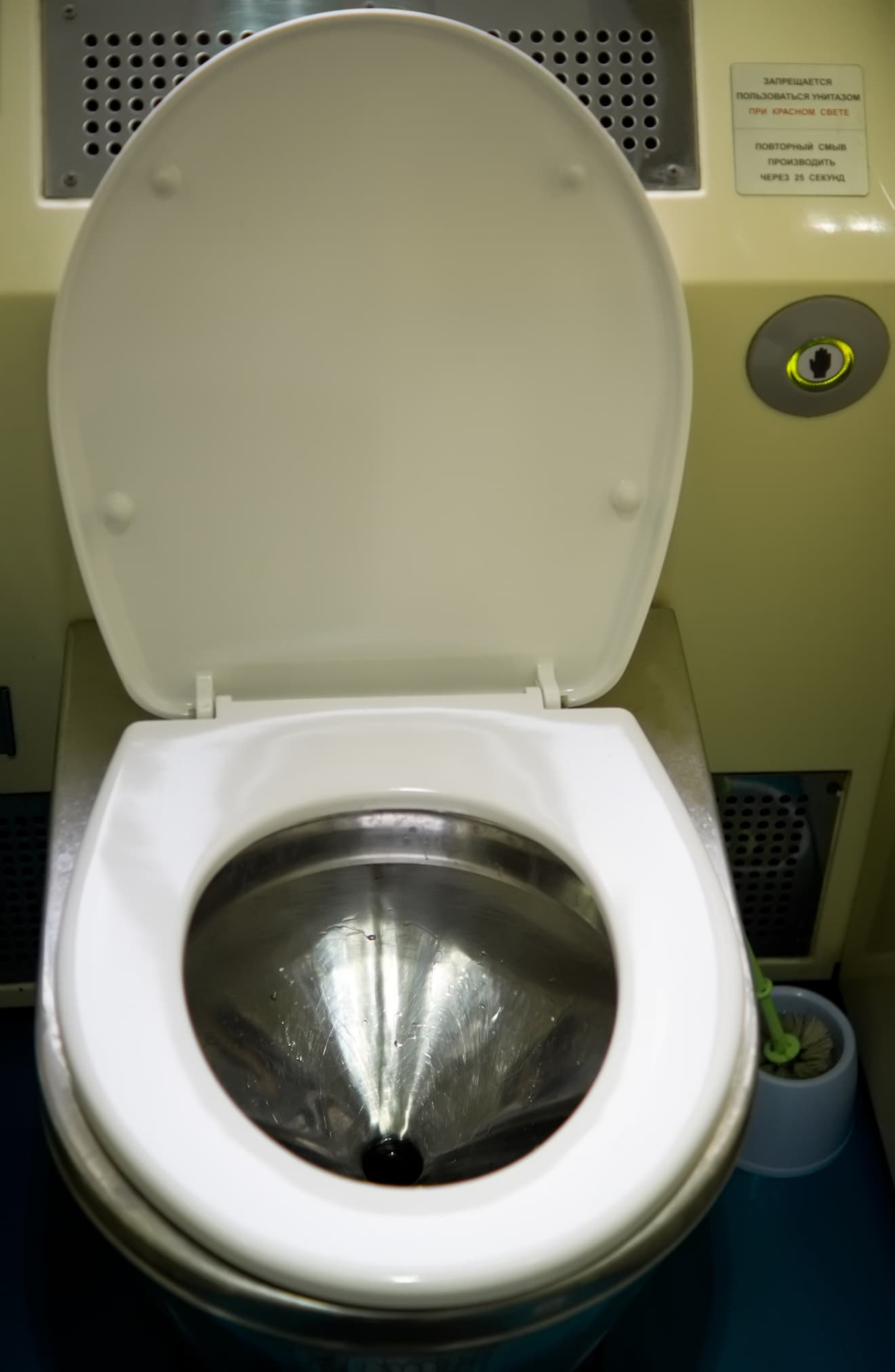
Most Russian train toilets discharge their sewage onto the tracks. A Sanzona (sanitary zone) is when the toilets are locked as a train passes through and stops in a city, so that human waste doesn’t fester in the middle of town.
So let’s imagine 30 minutes before Kazan, a 34 minute stop at Kazan station and 30 minutes after Kazan – one and a half hours with no toilet, plus the line for it afterwards.
The sanzonas are usually stated on the toilet door. Remember them, especially when you are sipping your seventeenth glass of tea.
Newer (especially firmenny) trains have closed-circuit toilets that keep their sewage in a tank. These are not locked during sanzonas. In Russian they are known as Bio-Toilets. When booking, look for the WC symbol with a leaf.
These are a huge improvement – until someone flushes a nappy/diaper and puts them out of order.
Challenges
- Learn to play “Durak” – the quintessential Russian card game. Bring some cards and get someone to teach you. Here is a tutorial to help you prepare in advance 😉
- Ask someone to explain the word “Avos” to you. Discover one of the keywords to the Russian world-view.

7 Things You should definitely bring with you on a Russian train
- Toilet paper. On firmenny trains it should always be there, but it may run out. Always bring toilet paper
- Russian money in small change for buying tea and food. 100 rubles and 50 rubles are good, and some 10 ruble coins
- A Russian phrase book. Entertain your newfound Russian friends with your phrases
- Playing cards for learning and playing durak
- Food – enough for you and a bit for sharing
- Pictures of your family – on your phone is fine
- A nice bar of chocolate from your country. Maybe even two. A bar of chocolate has got me tickets where there weren’t any. It can be very useful as a spontaneous gift. Maybe even as a bribe. Russia makes great chocolate, but people love trying foreign brands.
| 🗣️ Station in russion: | vagZAL |
| 🚂 Advanced booking: | Up to 60 days |
| 💲 Best buy: | Online – Avoide Queueing |
| 🎫 Online purchase: | TUTU.TRAVEL |
Read this before going to Kaliningrad by train
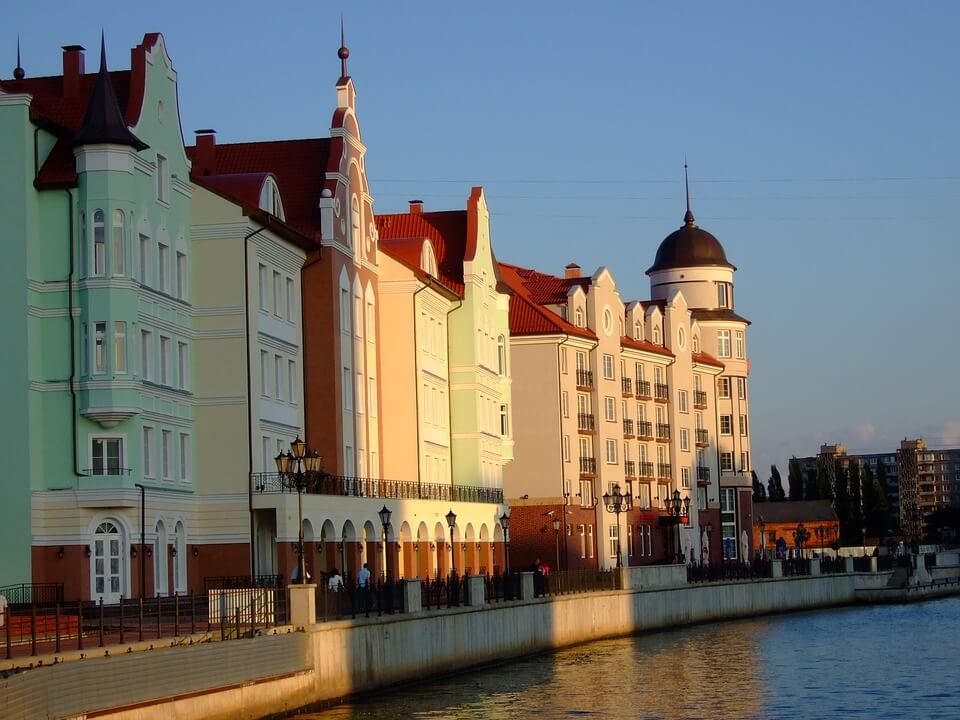
Kaliningrad is not connected to the rest of Russia. It is a Russian exclave on the Baltic Sea surrounded by the EU. To reach it you have to pass through Belarus and Lithuania.
Depending on your citizenship you may need:
- A multi-transit visa for Belarus.
- A transit or Schengen visa to pass through Lithuania.
Before going to Kaliningrad, make sure you have got your papers in order. To list here who needs what is beyond the scope of this post, but:
- EU, US, Canadian and Australian citizens definitely need a transit visa for Belarus but can pass through Lithuania visa-free.
Update! Travelling through Belarus
Recently Russia and Belarus announced that they had reached an agreement on recognising each other’s visas. It has not been signed into law yet, but it is only a question of when.
When the document becomes law, you will be able to travel through Belarus on your way to Russia without getting a Belarusian transit visa… fantastic!
Please stay tuned – as soon as the agreement is implemented I shall post it here.
And now, before I let you go…
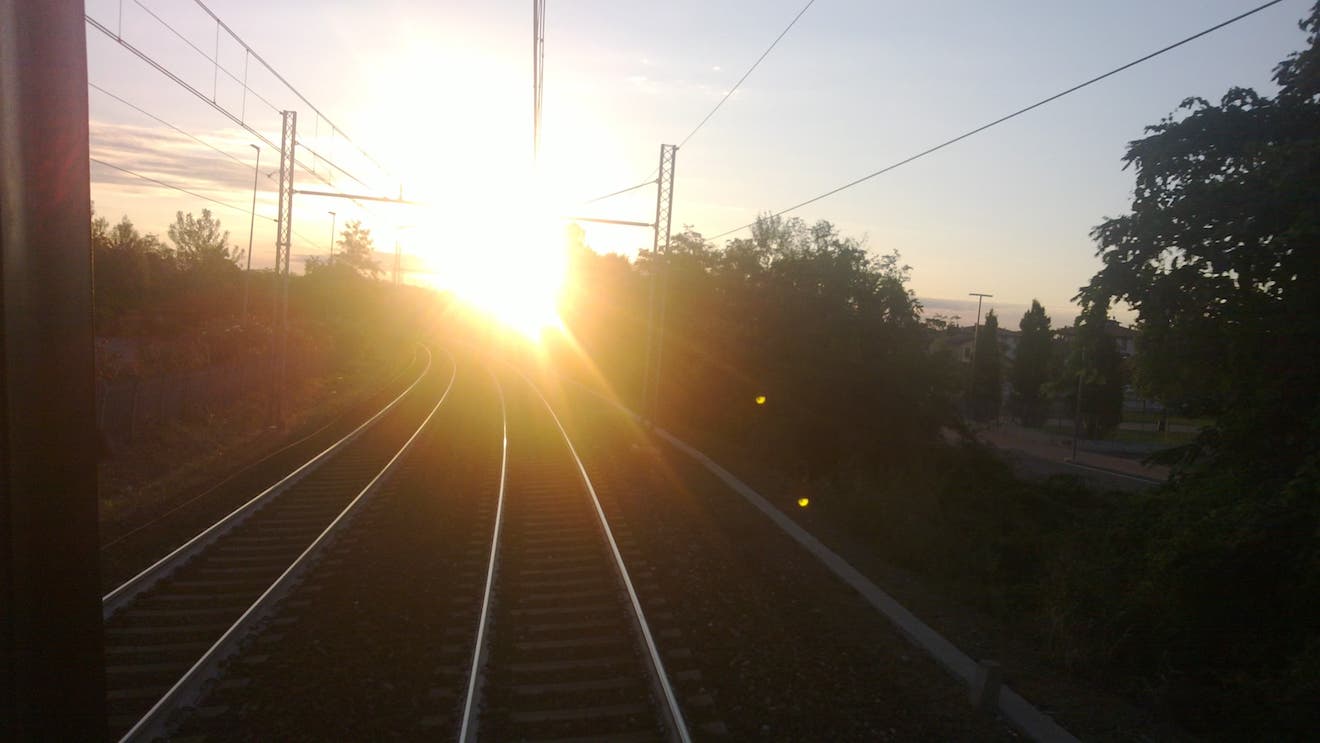
So what will it be? Russia has landscapes to suit every mood. Icy steppes frozen in stillness, lush forests teeming with life, dizzying mountains ringing with music.
As your eyes take it in, let your mind wander into the depths of your soul.
The time has come to get out a map of Russia and book your ticket.
Thank you very much for reading this article, I hope it is useful in planning your trip!
P.S. If you are going to travel by train in Europe, here is a great article on that, too.
Edward
Pin it for later!









Hi…. Great article….. can you help me with the icons on the Russian train site…. What does the one with the man and woman symbols mean?
Hi Rory!
Not sure what symbols are you talking about?
I believe it might be a sign to an all women compartment? But it’s hard to say without clarifications
I’ve found a couple of inaccuracies in your article, but otherwise it was fantastic. Could I suggest a date of publication at the top of the article? Russian train services, like trains everywhere, have had timetables and service inclusions affected by Covid-19. Depending on the age of the article this may explain some of the discrepancies. Could I also suggest a way to become the ‘carriage hero’? The provodnitsa’s power points in the corridor are used for vacuum cleaners, otherwise used by people charging their phones. Phone owners outnumber the number of power points, so if you have the time and inclination, buy a Russian double-adapter for a few dollars and immediately make friends.
Hi Scott, thanks for your comment!
Yes, indeed, if you have a power strip, you will immediately make friends! If this is not in the article yet, it should definitely be mentioned! 🙂
Amazing article! Indeed, Russian trains are the greatest and I am in love with them! I did a Trans-Siberian Railway trip and it was a trip of a lifetime. I even have a blog about it. Thank you for sharing this.
Thank you, I also love them!
This is a great article! I really enjoyed the way you write and all the information you gave. Thanks, Yulia!
Thank you, I’m happy to heart this!
I would need more context.
Please click through my bio to my blog, subscribe, then you’ll have my email address. Then email me screenshots and I can tell you for sure.
Without any further context I assume that “M” stands for “Мужское” (male) and “Ж” for “Женское” (female). Likewise, “МЖ” also sounds like “Мужское” to me.
Hi, can you share information on which is best, cars in the front part or the rear part of the train? Thank you.
Hi Christina,
It really makes no difference whatsoever. If you are in a car at the front of the train you will hear the whistle more loudly, if it is blown. That is the only difference I can think of.
Thank you for your comment, and happy travels!
Edward
Thanks for your prompt response. Apologize for I have more inquiry, what is the meaning of the category МЖ Ж and the category: Ж? What is the difference between the two? Thank you.
An excellent summary of travel by train in Russia!! I have travelled on many Russian trains and all that you say is what I have experienced. My next trip (in October 2019) is on the BAM from Krasnoyarsk to Komsomol on Amure.
Thank you, so glad you liked the article! 🙂
Yulia that was amazing! I took the train from Vladivostok to Moscow last week and everything you say is spot on and super useful! Only wish I’d read it before today 🙂
Thank you, Nina! I’m so glad you liked the article! 🙂
Dear Edward!
Wow, thank you so much for this wonderfully detailed guide on Russian trains! We are planning to go from Germany through Russia to Kyrgyzstan by train in August, and this did already answer some of our questions!
You also wrote about the Belarus-Russian visa agreement that is planned for the future.
We read that taking the direct train from nice to moskow has another problem though, going through Belarus: even if you have a belarus Transit Visum, you are not entering Russia in a legal way if you are a foreigner, because they don’t have a border control on the common Belarus border… I even read about people being sent back after entering Russia this way. We already called the Belarus embassy, but they could not really say much. The Russian embassy unfortunately does not seem to be available by phone ever 😉
I wonder whether you have some experience with this? Thanks a lot on advance! Luisa
Hi Luisa,
I’m sorry it has taken me so long to reply.
If you are on one of the three international RZD trains (Paris-Moscow, Nice-Moscow or Berlin-Moscow) you will be fine. I haven’t heard any stories of passengers on these trains having trouble.
However, at the moment I don’t recommend crossing into Russia with a train starting in, say, Brest or Minsk.
So the answer is: On the Nice-Moscow train you can rest assured you will be OK.
I hope you still read this.
Thank you for reading and for your comment.
Edward
Thank you very much Julia! Your blog is amazing, the best traveler’s blog! I do my homework very well, I already bought our e-tickets for Hermitage with your local help. Just one question, it not will be a problem it appears on both ticket my name?
Do you have other points to by ticket for Tsarskoje Selo or Peterhof? It works the same point?
I’m a Hungarian girl from Transilvania/Romania. You are now on Romania, am I right? If you need any help I am here for You!
Hi and thank you so much for the kind words! 🙂 I’m glad you find the blog useful!
No, there is no problem if your name appears on both tickets, the tickets are not nominal so they won’t check your IDs.
Regarding Peterhof and Pushkin (Tsarskoje Selo) – I am talking about these in this post about 11 Things to do in Saint Petersburg, where I am also indicating where you can buy a tour or normal tickets 🙂
It is true that I am in Romania at the moment, but I am leaving soon! Thank you very much for your comment, I hope I answered all your questions!
Hi! In 3rd class open sleep compartiment we have to pay for the sheets? We will travel from Mosocow-to Sankt Petersburg. What is 3E comfort? Thank you
Yes, you need to pay for sheets, it is not included in the price of the ticket (the price is very low though, about 1-2 USD)
Thanks for this lovely informative post. Quick question: do you know if any trains are hop off hop on? Let’s say I want to get off at a village and explore and catch a train the next day, will the ticket allow this? Thanks
Thank you for reading!
None of the longer distance trains are hop-on-hop-off, sadly. The reason is that you always have a place assigned to you. You would have to buy separate tickets for each train.
An exception are the Elektrichka trains – slow suburban services that go far into the countryside. In the greater Moscow area you can just check in and out if you’ve got a Troika card. Or simply pay for a new single ticket.
I hope this helps.
I love thisultimate Russian train guide – a train across Russia is high on our list of plans for travel.
However, this year we are traveling to the Caucasus – and planning to take the overnight train from Tblisi to Yerevan. I have been familiarizing myself as far as possible with the trains and booking system for the 202 train – which is similar to many Russian services in that it has SV, kupe and Platskart vagons. The tricky part is that the South Caucasus Railway booking system doesn’t seem to indicate what type of carriage it has offered as a booking.
When I tested the booking system I think it has offered by the SV (which is what I want to book) based on the price and the number of the coach – Coach class is described as “Compartment caggiage” (SCR website translation!) and the coach number is “2”. In your experience with the Russian services, is the SV carriage usually a number 2 on smaller services?
I intend to find out and share as much information as I can once we make it on board later this year!
Hi Mick, thanks for your comment and for reading. I’ll have to have a look at the South Caucasus Railway website and get back to you. Please bear with me… Edward
I also enjoyed the article and am considering a trip on Russian Railways. Thank you.
Hi! I am currently planning a trip to Russia for spring 2019 and I’m so glad I stumbled upon this article! I was wondering if you’ve ever met other travelers or people who spoke english during your train journeys? The deep conversations and family feeling you describe do sound awesome, but I think my russian will need a lot more practice before I can start making friends in the platskart!
Hi Gabrielle, thank you for reading and your comment! The first time I went on a Russian style train (in the Ukraine, from Lviv to Simferopol) I literally spoke no Russian or Ukrainian. Somehow, I managed. There is always someone who speaks a little bit of something like English, French or German. But even a tiny bit of Russian will get you a long way. Enjoy your trip to Russia!
Hi Yulia. Exciting trip with train! Most of people are unaccustomed to travel by car and guide tour. This is an exciting and adventure time. Could you give me suggestion about essential items for the trip? I think I’ll go as a backpacking. By the way, I love looking around natural surroundings, so I’m thinking to take binocular with me. Thank you in advance for your suggestion.
Hi from Australia
I’m planning this trip for next May 2019, with May Day celebrations in Vladivostok and depart next Day 2 May.
Is there a way of booking multi city sectors on the RZD.ru site, in my case 3 sectors or do I have to book them seperately.
This is a trip I planned to do 48 years ago after leaving university in Sydney. A good uni mate of mine and I planned to back pack overland thru Indonesia, Singapore and Japan then take the train from Vladivostok to Moscow and onto Europe. We travelled thru Portugese Timor as it was then before the Indonesians invaded. We took a very small very rough cargo boat, on the deck from Kupang to Bali via Java. Then back to Java and Sumatra onto Singapore where one day we took a very cheap charter flight on Air Caledonian to Gatwick. I travelled in Europe for 2 years and the rest is history. We did not get to Japan and across Russia as when we went to the Intourist office in Singapore and calculated the costs, which we had to prepay we would have been left with very little travelling funds. So the charter flight it was. So now I am doing that unfinished travelling across Russia.
Sorry for the long winded story, but I know this trip is going to be wonderful.
Cheers
Johnny C
Sydney, Australia
Hi Johnny,
Thank you for your long winded story and your question. I think it is great that you are making your way to Russia.
Could you please tell me what you mean by “sectors”. At the moment I’m not sure how to interpret it and thus cannot find you the best answer.
Cheers
Edward
Thank you Edward, this will be very useful. I have a question. During the stops, which are the signals that the train is about to leave, is there a number of whistles, do the provodniks call the passengers on the platform or the doors just close when the time comes?
Thanks a lot for your effort.
Hi Raul,
No, there is no whistle. When a train sets off, the provodniks shepherd the passengers inside and are the last to enter the carriage. They then fold down the floor-board at their door and stand on it in the open door, holding a flag. Then the train sets off.
Depending on how long the stop is, I wouldn’t move too far from the train. I recommend always being able to see your provodnik, and if you do go away from the train, to make sure your watch is showing the correct time.
Thanks a lot Edward
Hi
Is there a Tv on Russian trains, is there a wifi as well
Thanks
Some of the spalny vagon cars and the VIP-class coaches have TV. I understand that some of the newer trains have WiFi, but it hasn’t been rolled out everywhere yet.
Edward, as we say in Spanish: GRACIAS!
Your article is so detailed, well written, with very nice pics, too. It surely will help me while traveling in russian trains, as I go to the next World Cup.
Thank you again for taking the time for all of us!
Big hug,
Conrado (from Uruguay)
You are most welcome. I’m glad it is useful. Thank you for your comment!
Your website has the best details about russian trains, yet not fully complete. Please work on different train types, actual latest photos of inside of the train etc. I mean, people should never have to visit any other site for any more info.
I can see russian trains are more or less same with their Indian counterparts. I have a few questions. Could you please try to answer these ?
1. On booking website – pass.rzd.ru, I can see that “Upper in last comp.” seat having low price. What is the downside of that particular seat ? If I compare the compartment style with Indian train, I think there will be lights ON all the time at the exit which falls directly into the person who is sleeping at that bed.
2. Can a 5ft 10in person fit on the “Side Upper” bed comfortably ?
Hi Vineeth. Thanks for your comment. Both me and Yulia did our best to find good photos. What you are seeing is the best we could obtain. Follow this link for pictures from Russian Railways themselves: http://visual.rzd.ru/photobank/public/ru?STRUCTURE_ID=4&layer_id=5327&make=search&type=&cat=&photogal_id=&textSearch=плацкарт&city=&date_begin=&date_end=. I would have liked to use these, but I couldn’t get them in a decent resolution.
Now for your questions:
1. Upper in last compartment: while I don’t have the berth number, I suspect it is the last compartment before one reaches the toilet. Upper berths are cheaper in general, close to the toilet seems also to be cheaper, because people are constantly coming and going, which means it is a restless area. The lights shouldn’t disturb you – there is a door between the exit and the sleeping area.
2. I am six feet tall and slept fine on a side upper.
I hope this helps.
Thank you very much for your music blog, which I’ve enjoyed listening to already, and also for the Russian radio link. If I discover any more about the true source of Russian radio on the railways I’ll get back to you. But conspiracy theories abound in all countries so I’ll neutral so far on that theory.
This is an excellent,very informative article. I travelled on the Russian railway in 2016 and a lot of what you have said rings true. I got to really enjoy the radio programs that we heard on the train as it was a really eclectic mix of music. Do you know whether it would be possible to tune into that station from Europe? All the best, Alison
Alison, I’m glad you liked my post. I don’t think there is one station that serves all trains. There are threads on the internet with people swapping conspiracy theories about who runs the radio on the train. None of them are conclusive. Recently I published a post on my own blog with an eclectic mix of Russian music from Youtube. Here is the link to that: http://bit.ly/2IIHpE3. One Russian music site I love and recommend is staroeradio.ru. They have an app and you can also find them using an internet radio. Their repertoire is huge, spanning from the 19th century to the 1990s. For more contemporary music I tend to rely on Youtube. Thanks for reading and let me know if you managed to find what you wanted.
Beautiful work!
Thank you!
Do you still work as a conductor? What’s your familys opinion of travelling all around europe? They not missing you?
Hey Nelly, thank you for your comment. At the moment I don’t work as a conductor – the trains I worked on were cancelled. Now I have a wife and baby I travel less. I write about European rail travel instead, so other people can make the most of their journeys in Europe.
Wow Edward! This is such a detailed and extensive guide. I really enjoyed reading this, even though I‘m currently not planning on visiting Russia anytime soon. It‘s definitely on my list for later, though.
Great post. This must have taken you ages to write 🙂 Great job.
Seraina
Thanks Seraina. I’m so glad you like it. Yes, writing this post nearly broke me. I hope it helps you when you do visit Russia – or Ukraine, or any of the other countries using this system.